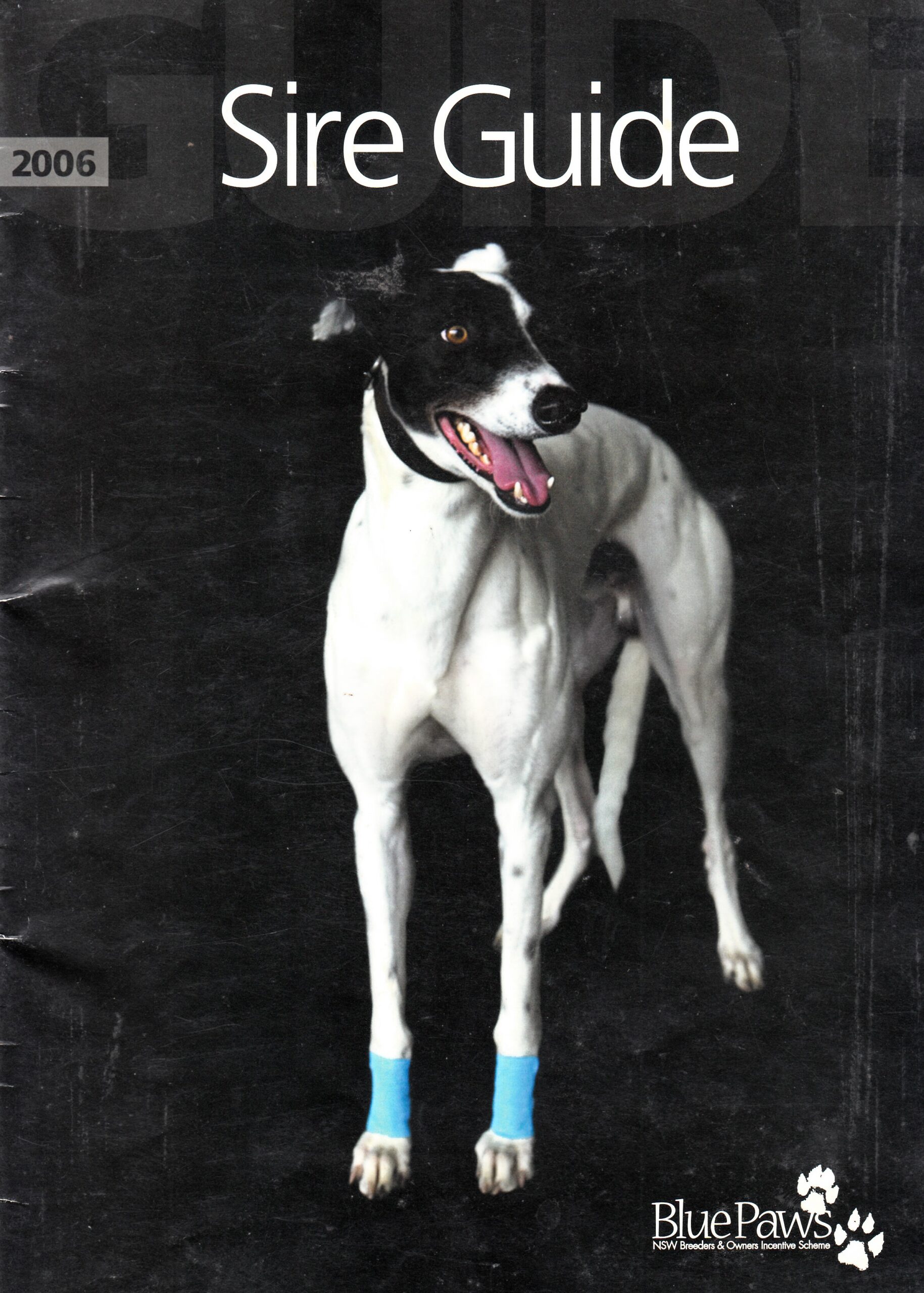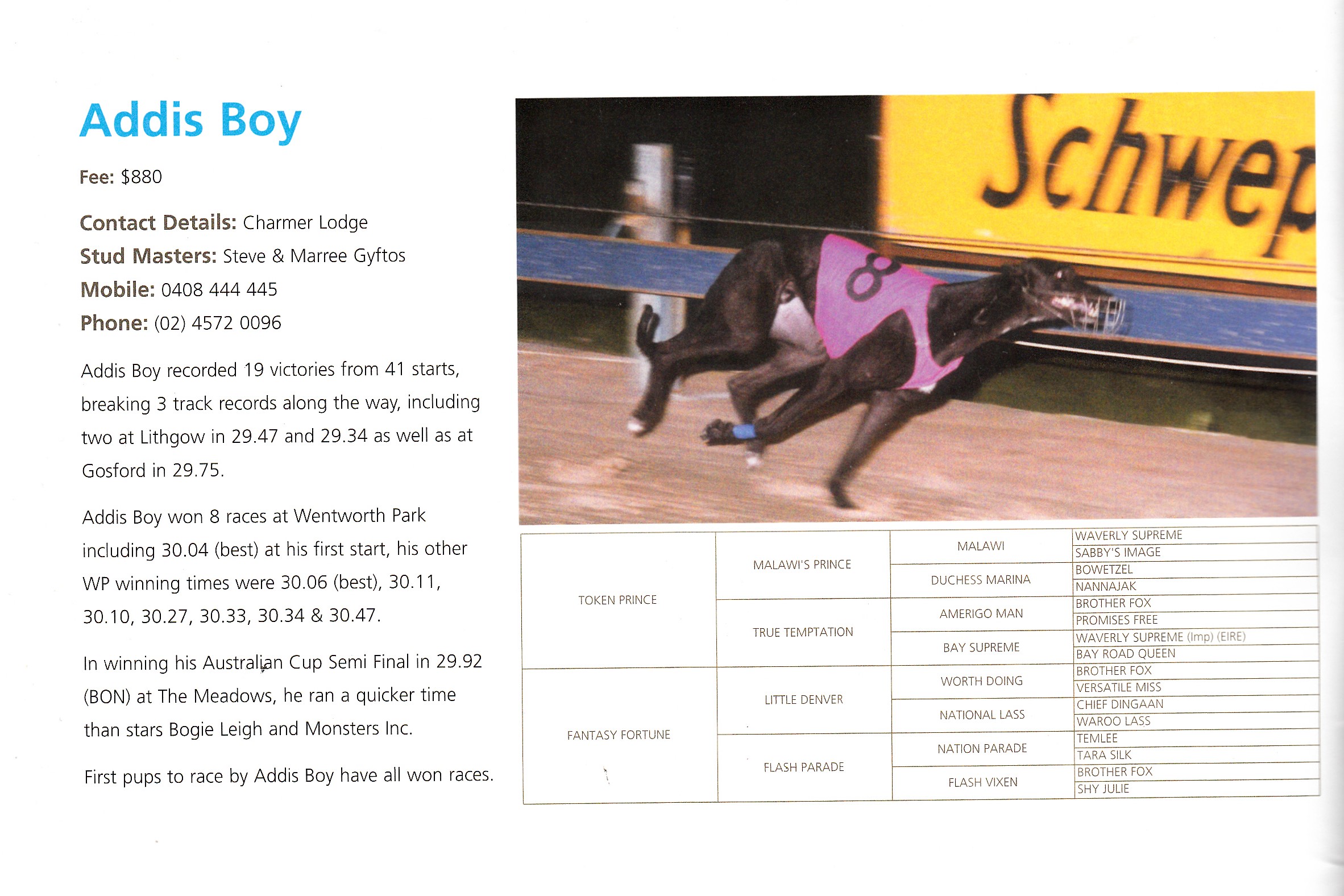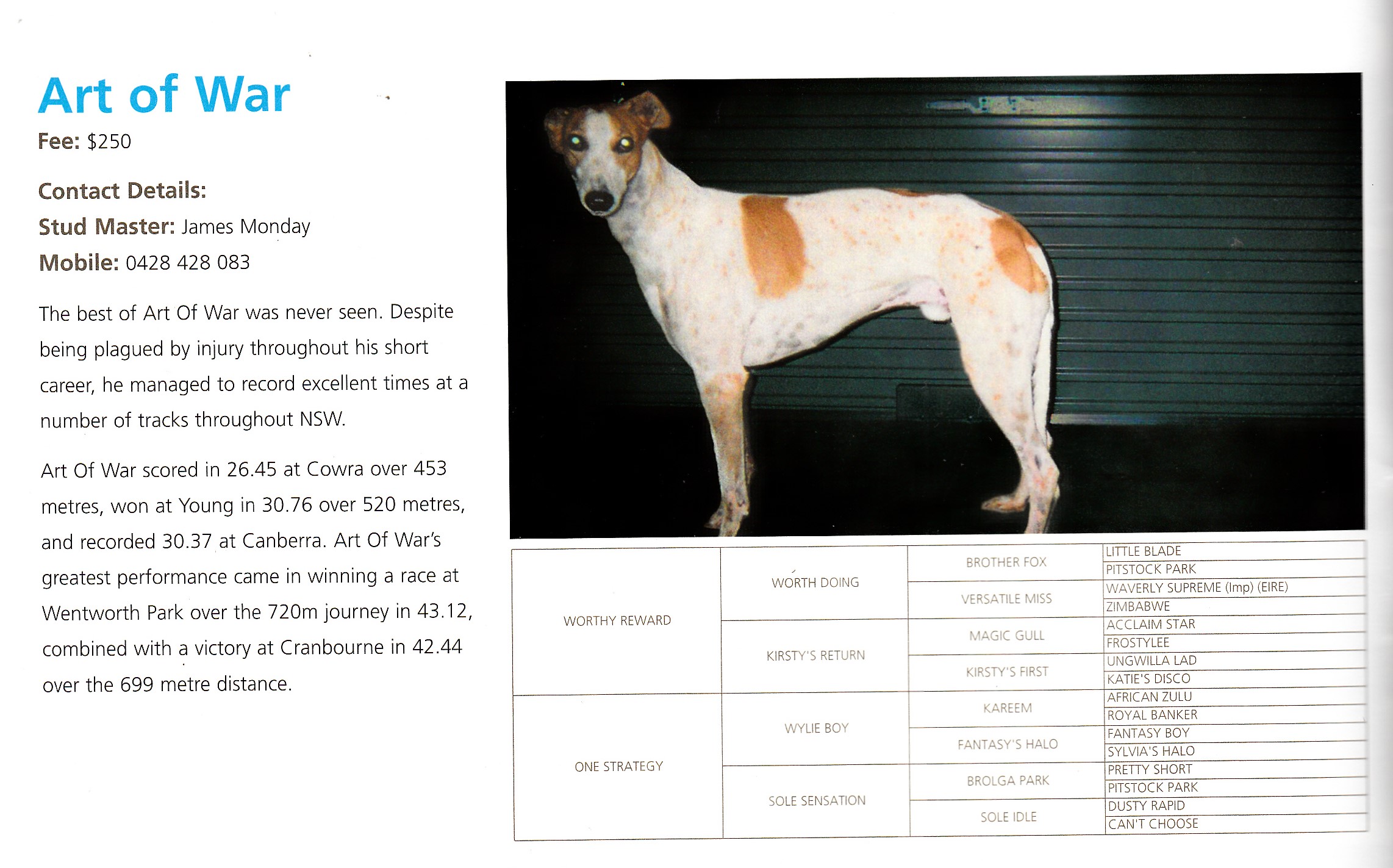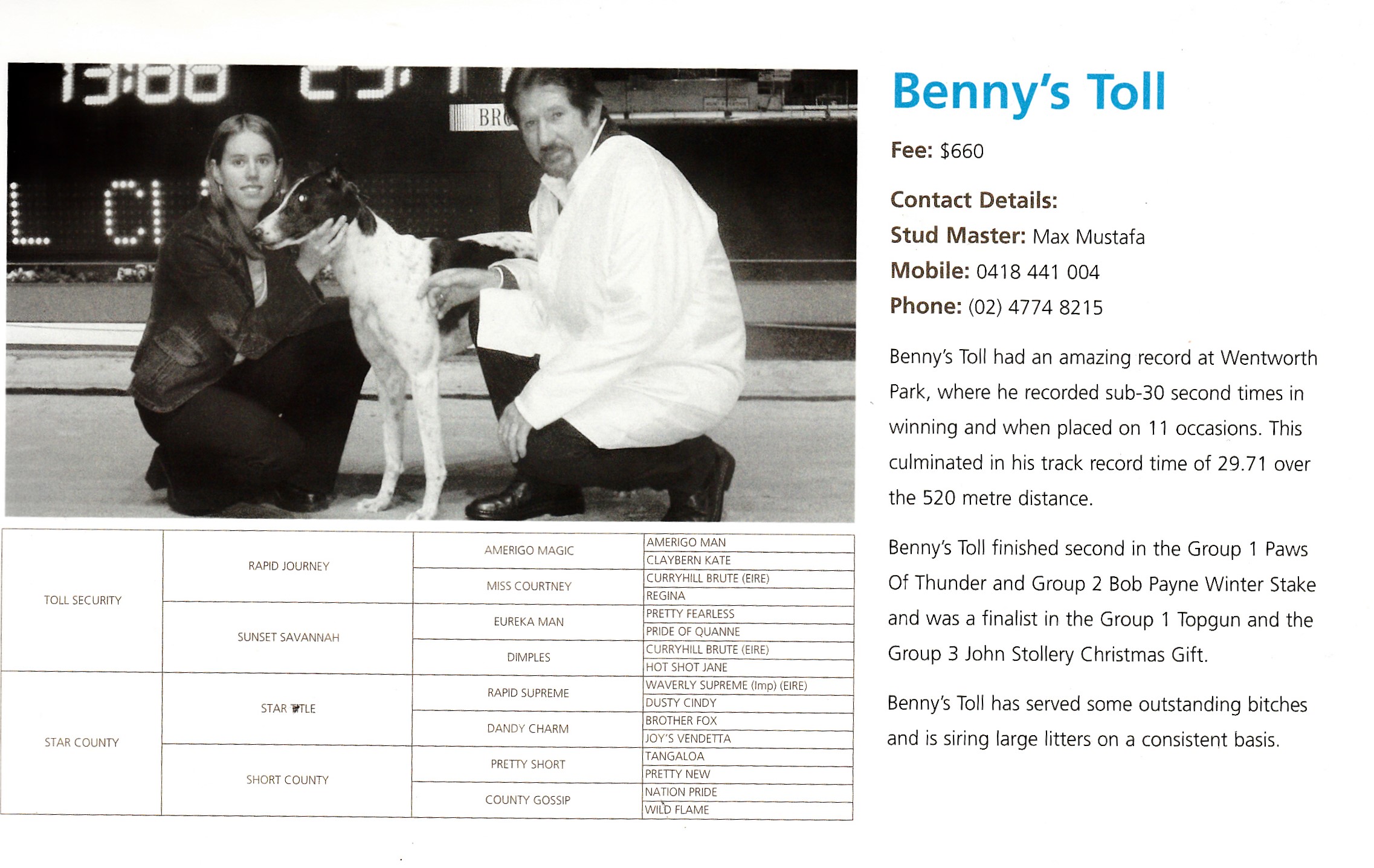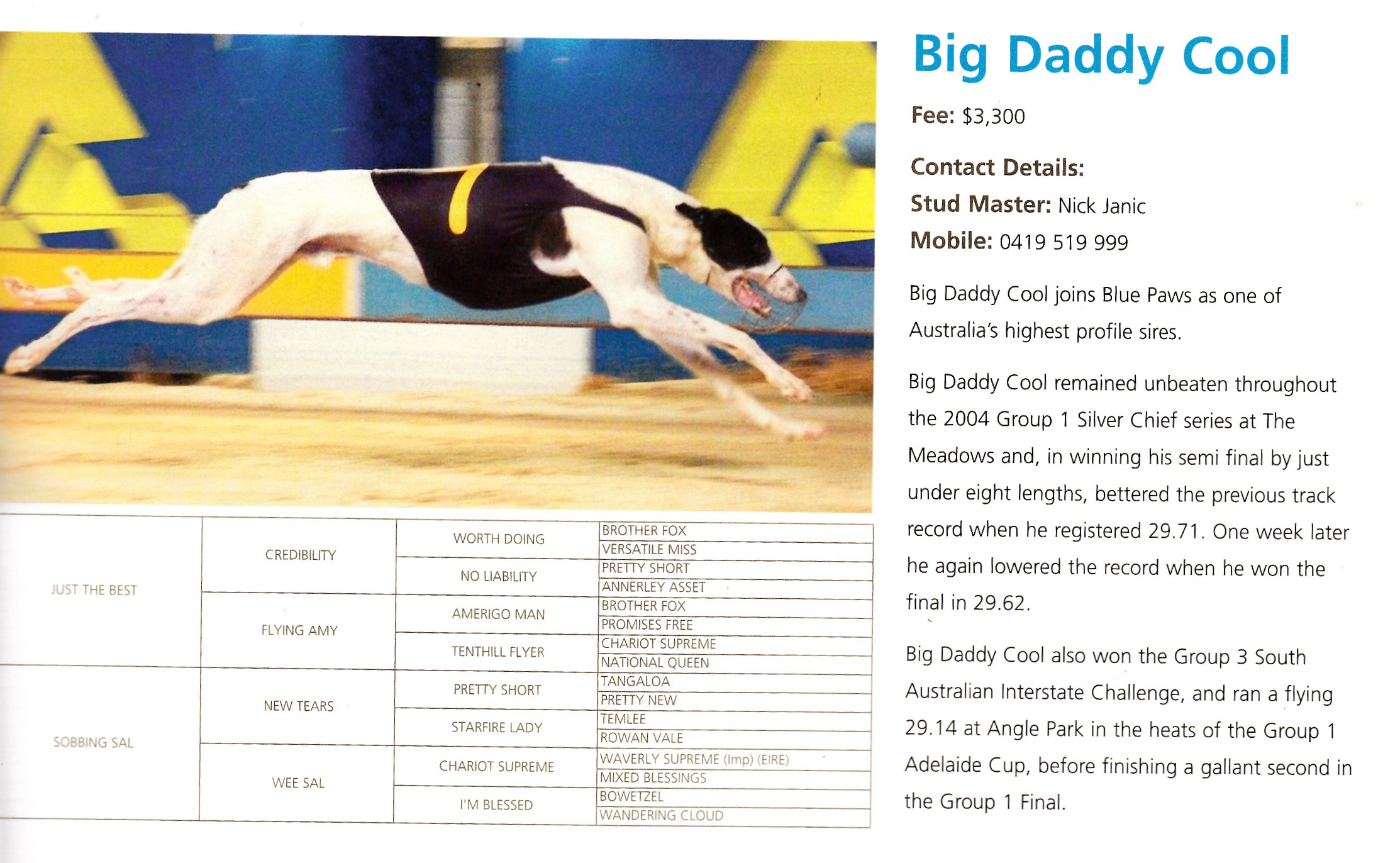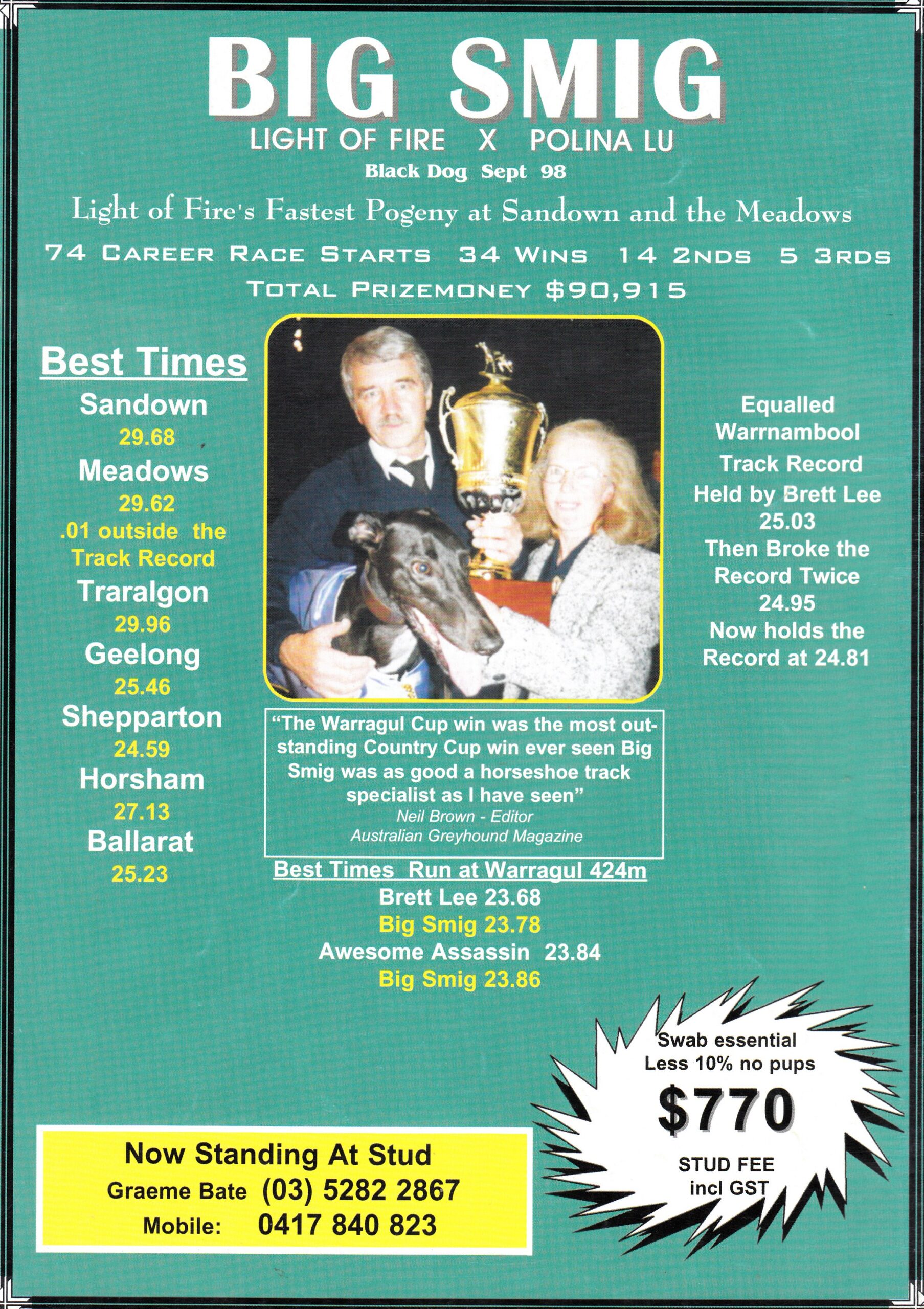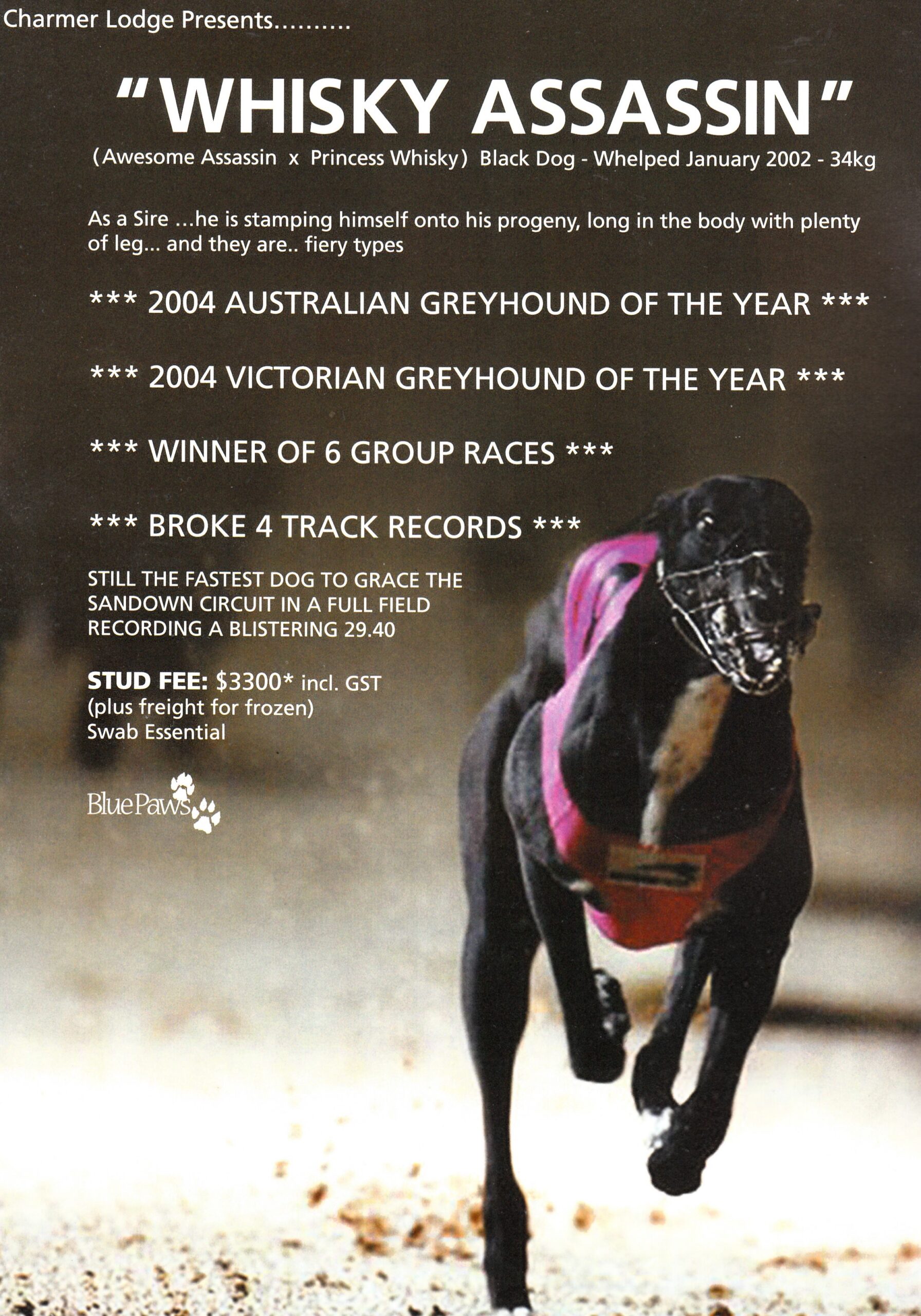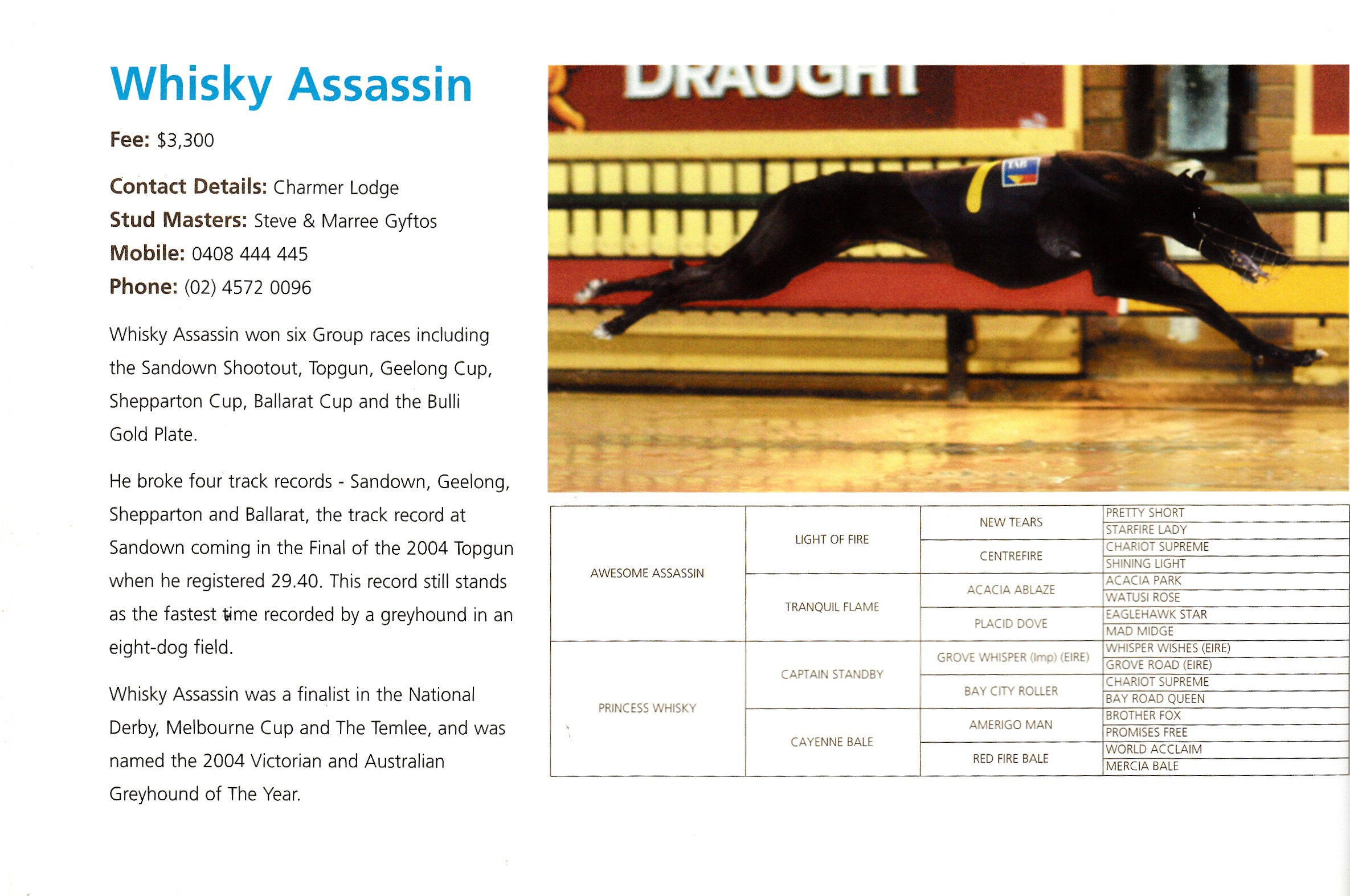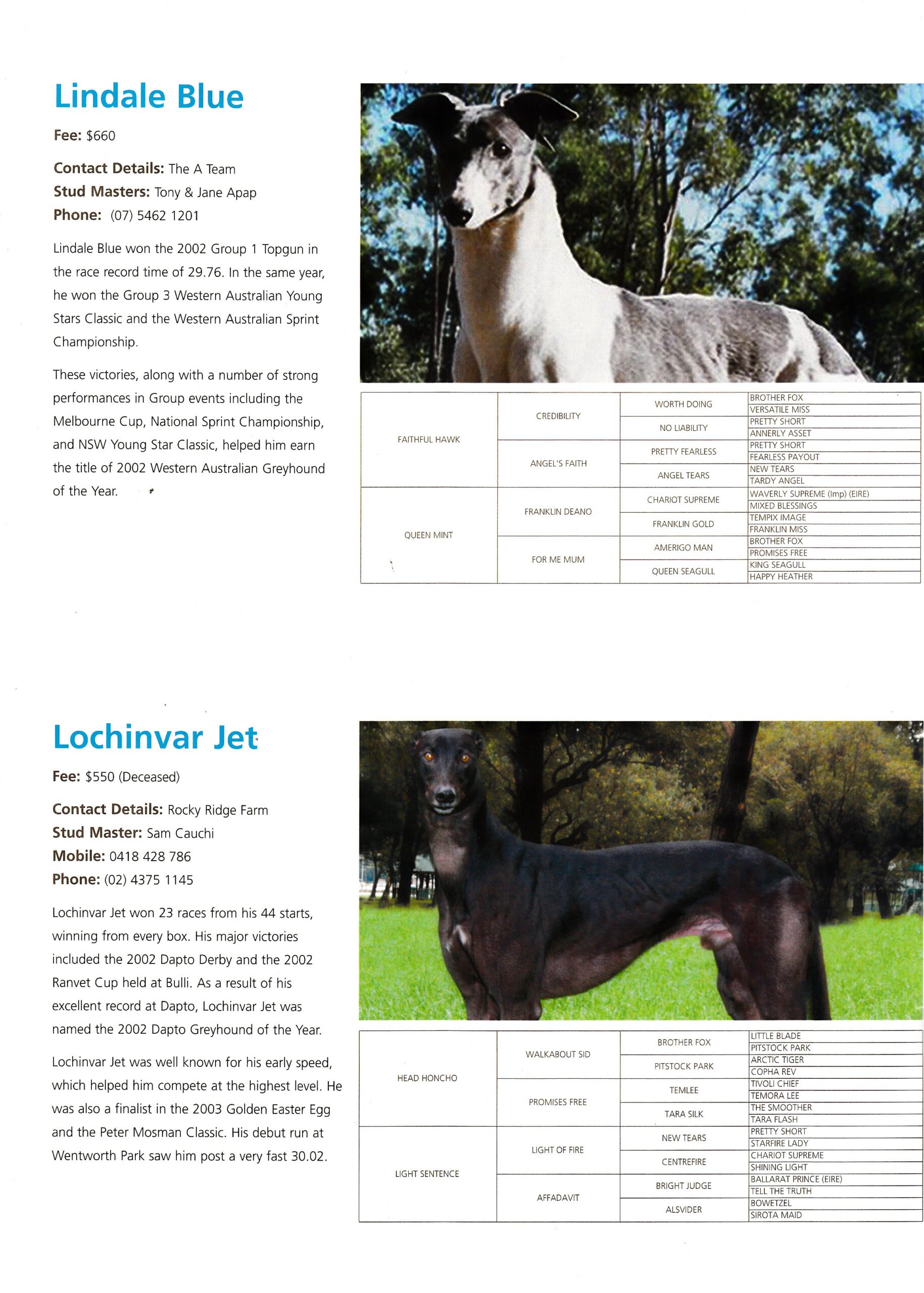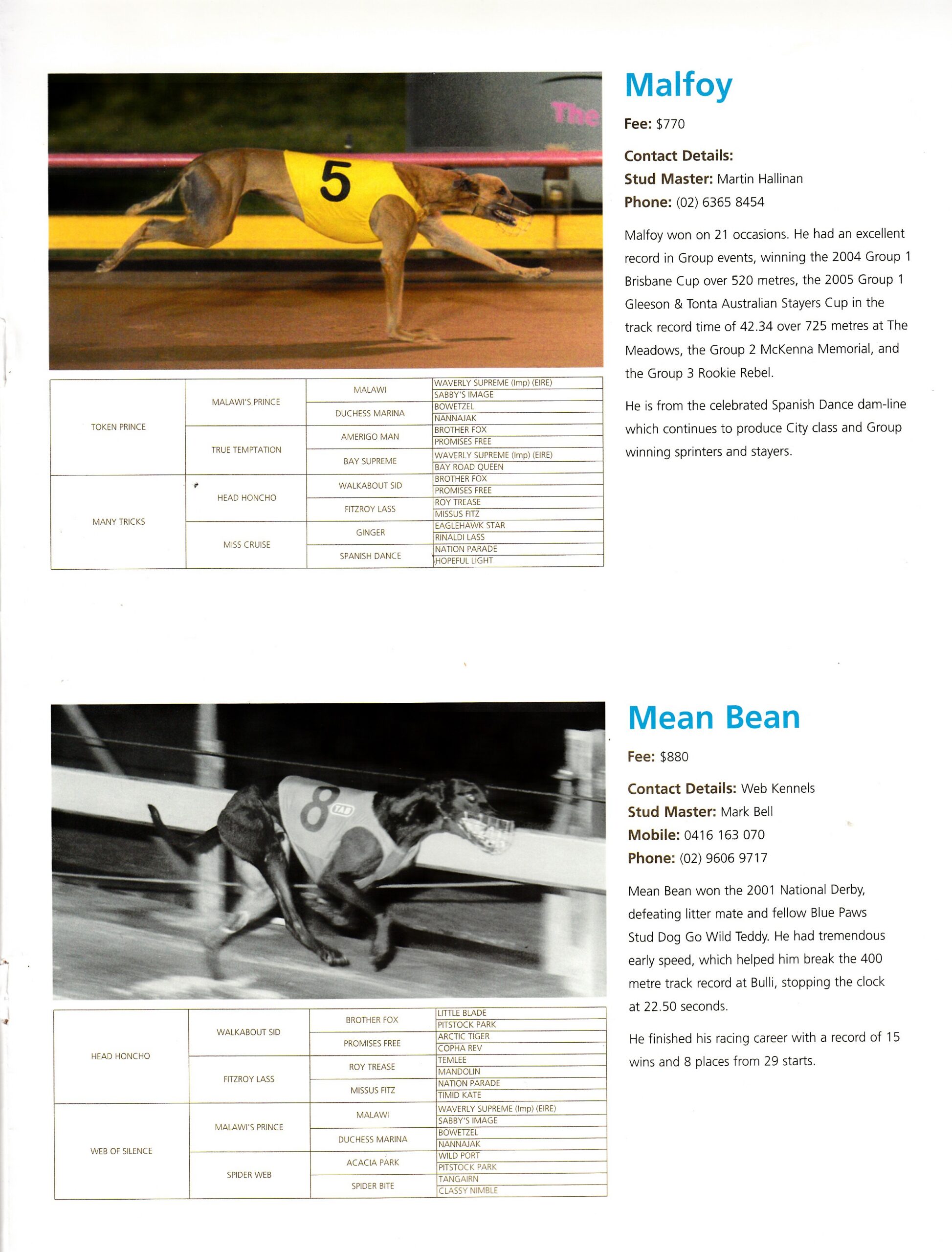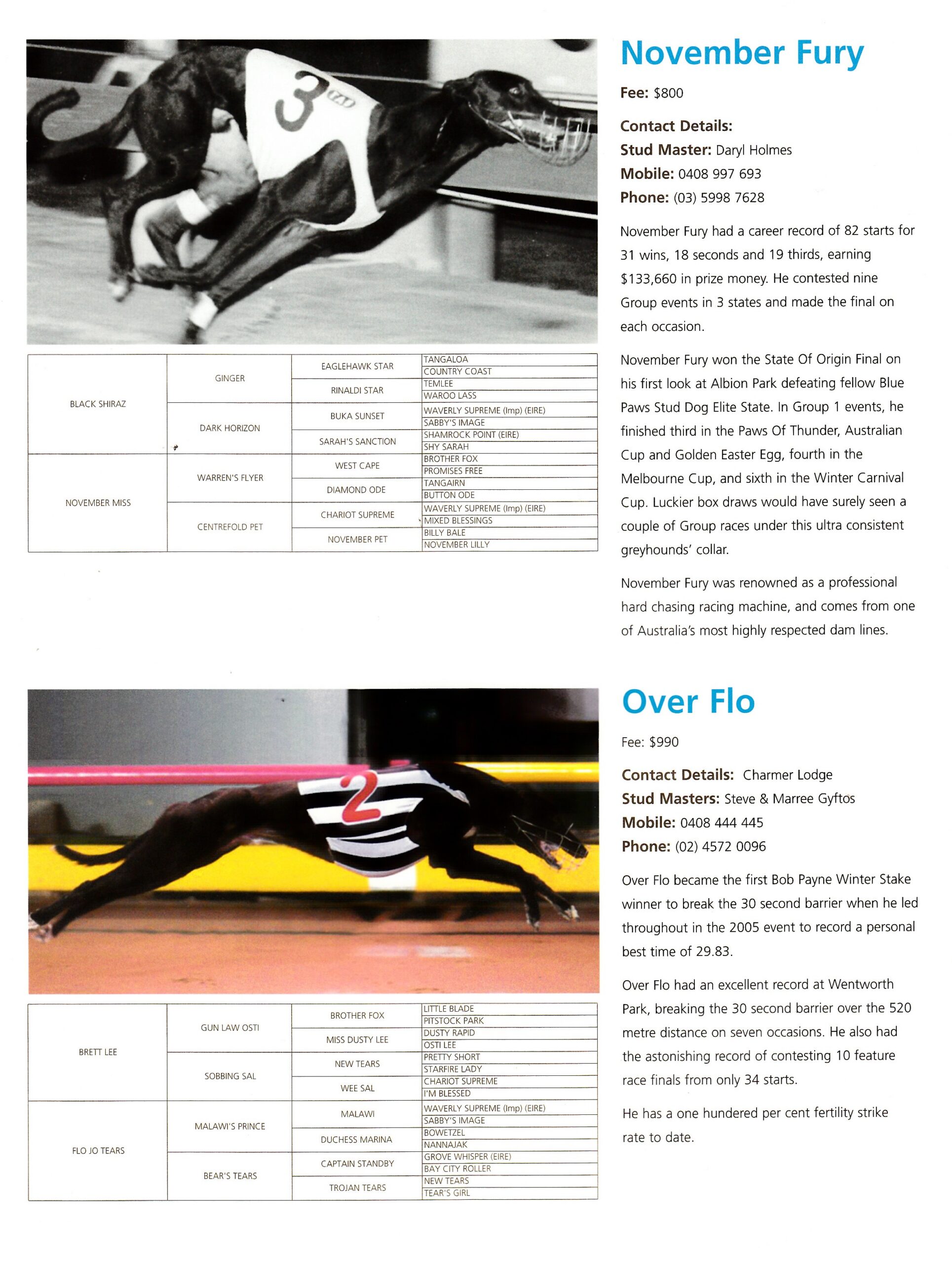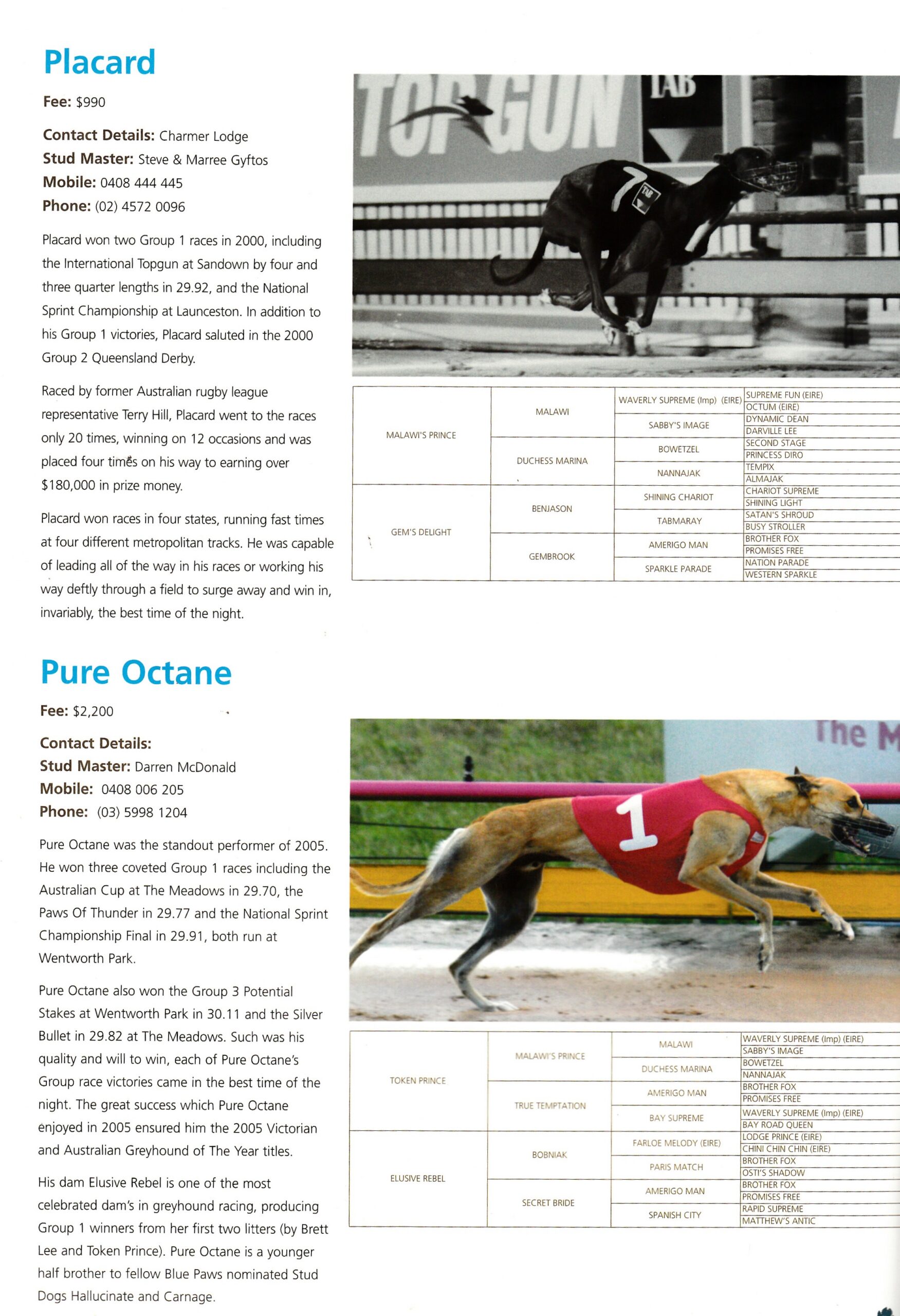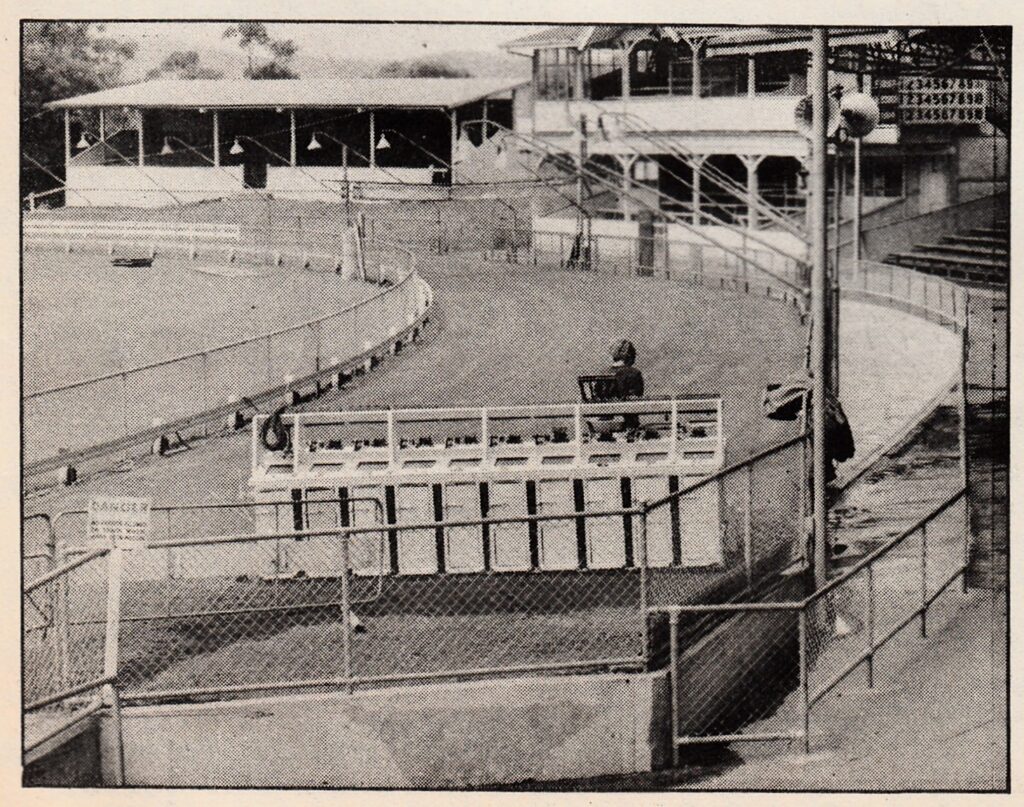
Hobart celebrates 90 years of greyhound racing
15 / 10 / 2025 Article by: Brennan Ryan
In Brief
- Hobart greyhounds celebrating 90 years of racing in Tasmania.
- Historian Greg Fahey reflects on the legacy of the nine decades.
- Greg talks about the Hobart Thousand, administrators and callers.
The Hobart Greyhound Racing Club celebrates 90 years of racing in southern Tasmania this Thursday night.
While the venues have changed over the past nine decades, the traditions of greyhound racing have remained the same.

Tasmanian historian Greg Fahey with former Labor Tasmanian Premier and Racing Minister Paul Lennon.
The club, founded in November 1933, held its first race day on 30 January, 1935, at the TCA Ground, the historic home of greyhound racing, under the name Hobart Speed Coursing Club, where the Hobart Cup (now known as the Hobart Thousand) was first introduced.
After the Speed Coursing Club was dissolved, the Hobart Greyhound Racing Club was established on 30 September, 1935. The club held its first race meeting on 20 October, 1935, under the leadership of Arthur Morgan, known as “the godfather of greyhound racing”.
Tasmanian greyhound historian Greg Fahey highlights just two key aspects that stand out in Hobart’s proud history.
“There are two absolute standouts: one is Arthur Morgan, and the other is the now Group 1 Hobart Thousand,” Greg Fahey said.
“Arthur Morgan was the godfather of greyhound racing in Tasmania, and he truly was. There would have been no greyhound racing or certainly never get off the ground the way it did, except for him. He drove it fearlessly and brought good people on board.
“Morgan ran things with an iron fist, which unfortunately you can’t do these days. He just didn’t want Hobart to be a successful club; Arthur wanted the Hobart greyhound club to be the best club in Australia, and to be the best club, you need the best race.”

TCA ground was the original home for Hobart Greyhound Racing in Tasmania.
Arthur Morgan served as the Secretary Manager for over three decades, stepping down on 2 October, 1967, and passing the reins to another iconic figure, Peter Wright. Morgan passed away years later, leaving behind a legacy for which racing remains deeply indebted.
Max Mason, Wayne Spotswood, Gordon Nichols, Peter Gray, Ken Harvey, and Noel Butters were among those who later ran the club.
The transition from the TCA to the Royal Showgrounds marked a significant step forward in Hobart’s progression into the future.
On 30 October, 1980, the HGRC closed its doors at the TCA ground and held its first meeting at the Royal Showgrounds on 30 November, 1980. Later, on 2 November, 2006, it moved just across the road to Elwick Racecourse, creating a state-of-the-art tri-code venue.
“When Arthur Morgan established the Hobart Thousand it was worth 500 pounds to the winner, which was a fortune in 1939,” Greg said.
“It was briefly halted by the war, but when it resumed in 1946, it was worth 1000 pounds, solidifying its status as the biggest race in the country for over a decade. Trainers and their dogs flocked from all over, and Hobart gained lasting fame from that point onward.

1981 Hobart Thousand winner Black Aztec (centre) trained by Harry Sarkis.
“Arthur’s foresight for the sport, and everything that has happened since then, stem from the solid foundations he established.”
Legends like Rookie Rebel, Benjamin John, Brother Fox, Top Shiraz and Tommy Shelby have brought immense attention to the Hobart Thousand, while trainers such as Robert Britton, Hilda Williamson, and Richard Stamford have also played their part in its success.
The Hobart club was successful in hosting the National Sprint in 1987 and 2012, National Distance in 1971, 1978, 1983 and 2012.
Arthur Morgan also established Australia’s oldest maiden series, the Maiden Thousand, back in 1949, which became a prized series.
Despite its ups and downs, Greg Fahey believes the sport owes its success to the dedication and passion of racing enthusiasts.
“Hobart has been fortunate to have outstanding individuals support the club, and Peter Hayes was another great contributor,” he said.
“When it comes to race callers, three names truly stood out. Firstly, Bill Barwick, a renowned sportsman and Olympian, handpicked by Arthur Morgan. Rod Marsh is considered the greatest greyhound caller in this state, and Shane Yates was a great caller and person.”
Looking back, the Hobart Greyhound Racing Club boasts a remarkable history in Tasmania that will forever stand proudly.
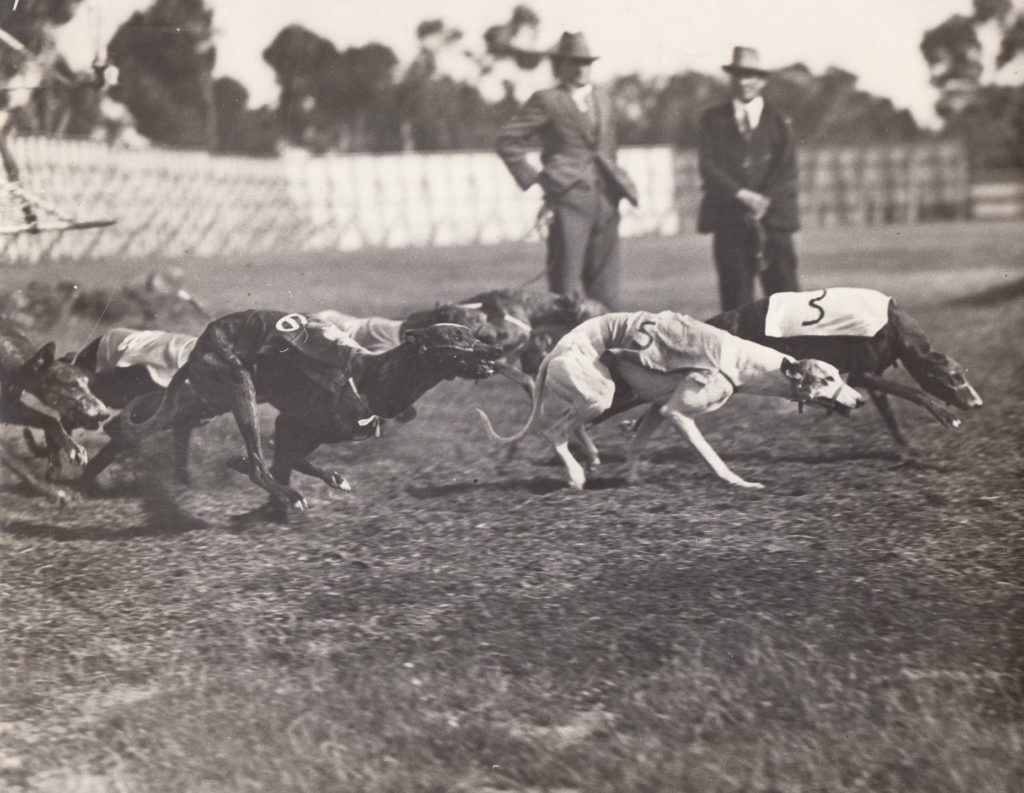
A new member Robert Aquilina of our Facebook Group Greyhound Racing Through The Years has posted some extraordinary photos and stories from the early 1935 through to the 70's. Amazing stuff and saw fit to display a number of them here on the History Website. Thank you Robert.
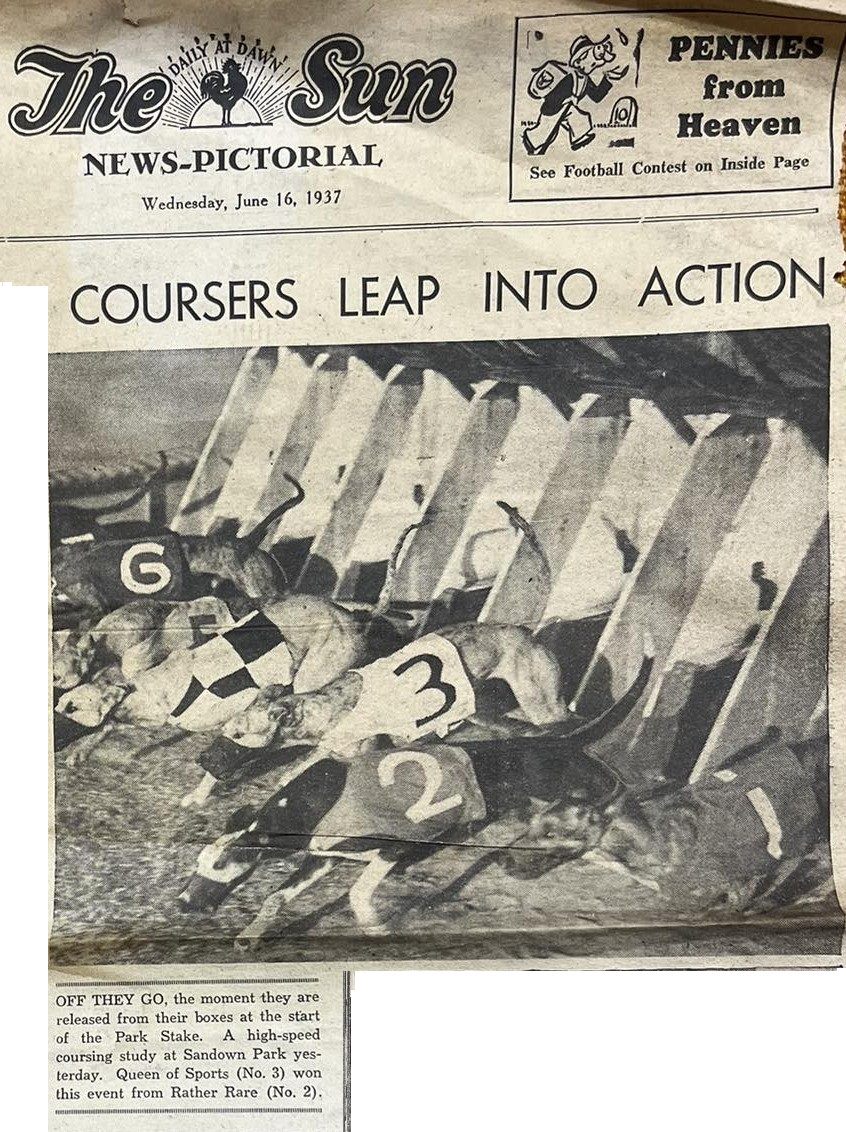
A rare front page of the Herald -Sun 1935.
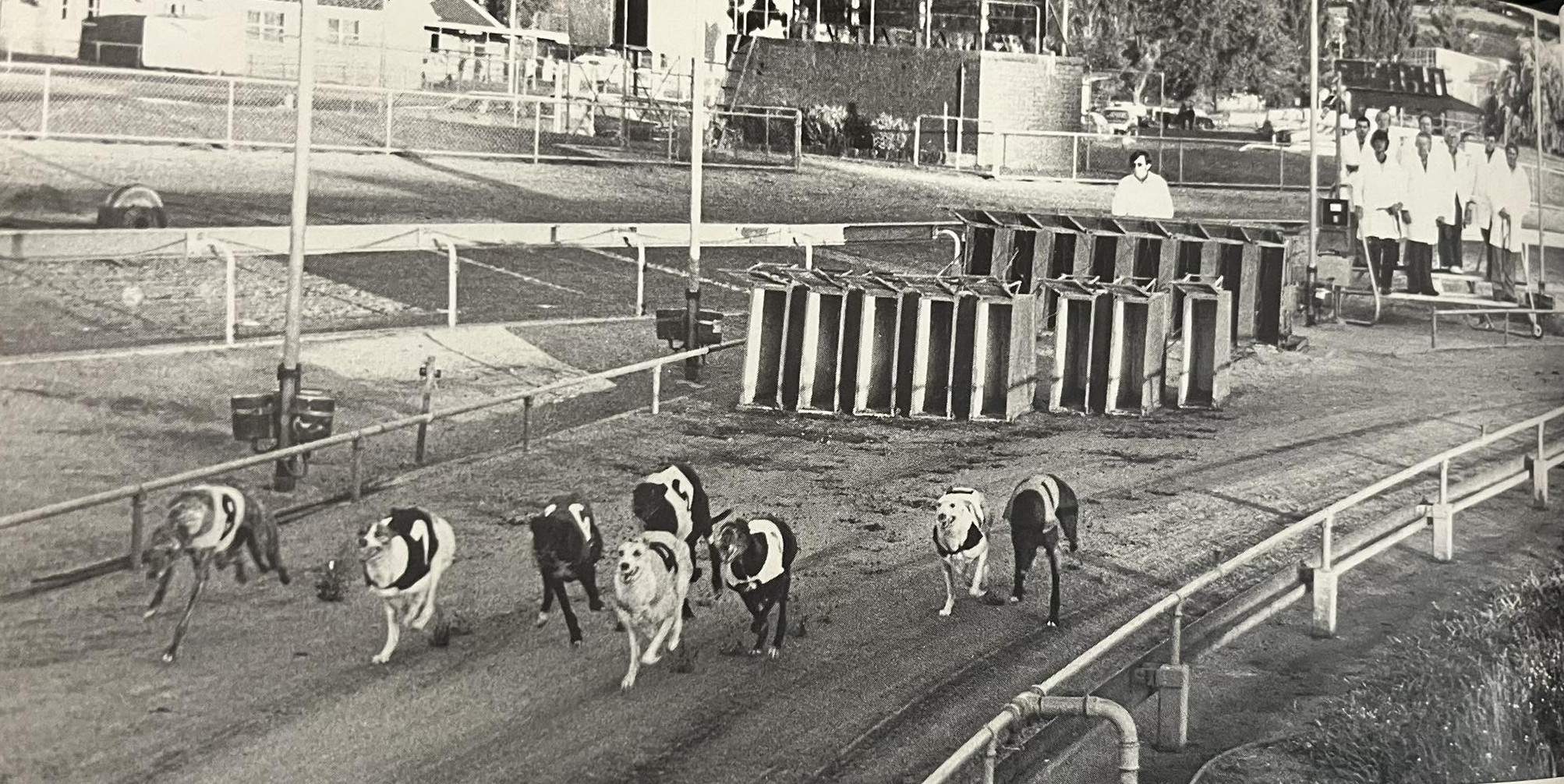
Warragul a handicap start over the 699.
Bill Salter- And they are handicap boxes there, I remember the handicap hurdle races at Olympic Park and Odearo won off scratch. I think he was 15 yds from the front runner, good times
Russell Savige-Handicap start.
Des Dooley- Looking at the background and being on a bend I would suggest it is the old 545 yard start.
Gerald Lanigan-Des Dooley on the money!
Gary Smith- Handicap boxes as well
Damien Howard-Was it in the same location as the current track ?
Bruce Loft-Handicap race over the old 699m?
Craig Benson-Brilliant photo
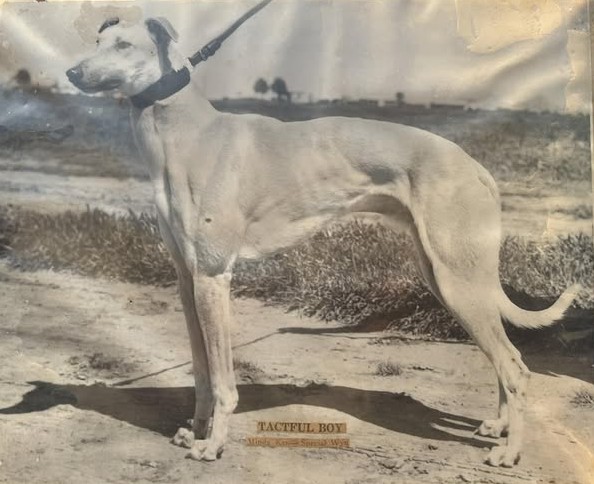
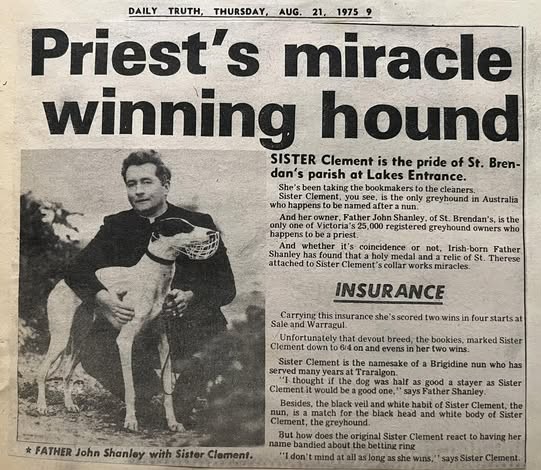
Des Dooley - Very strong greyhound influence in Bairnsdale and Lakes Entrance at that time. Not sure whether Father Shapley trained her or Kevin Baluch.
Gerald Lanigan - Des Dooley Kevin trained her. She was by The Smoother from Benjamin Lass, and bred by Kevin. Was a good litter. Father Shanley trained, for part of her career, a bitch called Sister Maryanne from Benjamin Lass’s second litter to Lively Band. You may remember a dog named Ragtime Jam, he was from the second litter.
Sister Maryanne litter sister, Palanquin, was the dam of a bitch named Remo Gold (by San Remo) who threw Palanquin Belle and Pebbles Beach, two very good stayers trained by Stan Beecroft.
Jeff Collerson -Gerald Lanigan I wrote a story once for the Tele about the girls at a convent whelping and rearing a litter of pups owned by Father Manning, who later became Monsignor, then Bishop Manning. He was a great greyhound man.
Des Dooley- Jeff Collerson Tivoli Chief?
Jeff Collerson -Des Dooley Yes Monsignor Kevin Manning owned Tivoli Chief who was trained by Jim Carr junior, son of the chief steward. When our son was to enter high school, my wife (Catholic) wanted him to go to St Patricks College. I'm a Protestant so the headmaster said we had no hope of getting him enrolled. I told Jim Carr senior about it and he said "don't worry, your son will be going there, I'll get Monsignor Manning to write to the school.'' The headmaster received a letter saying what a wonderful family we were and bingo, our son went there immediately.
Bob Howlett- It was a great story. Father Shanley took the front passenger seat out of his car and put a bench/bed for the dogs and the nuns had to ride in the back seat.🤣
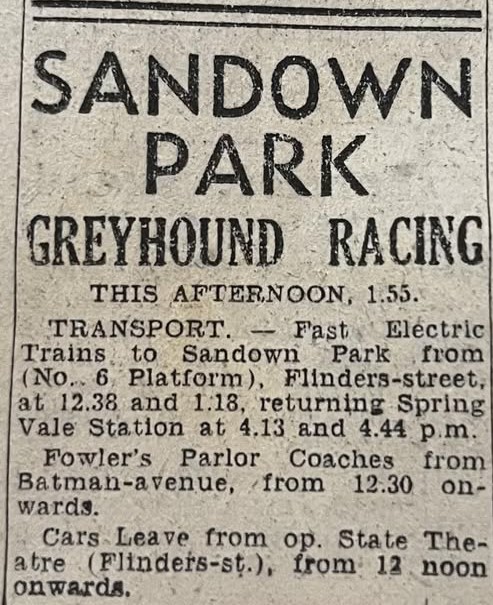
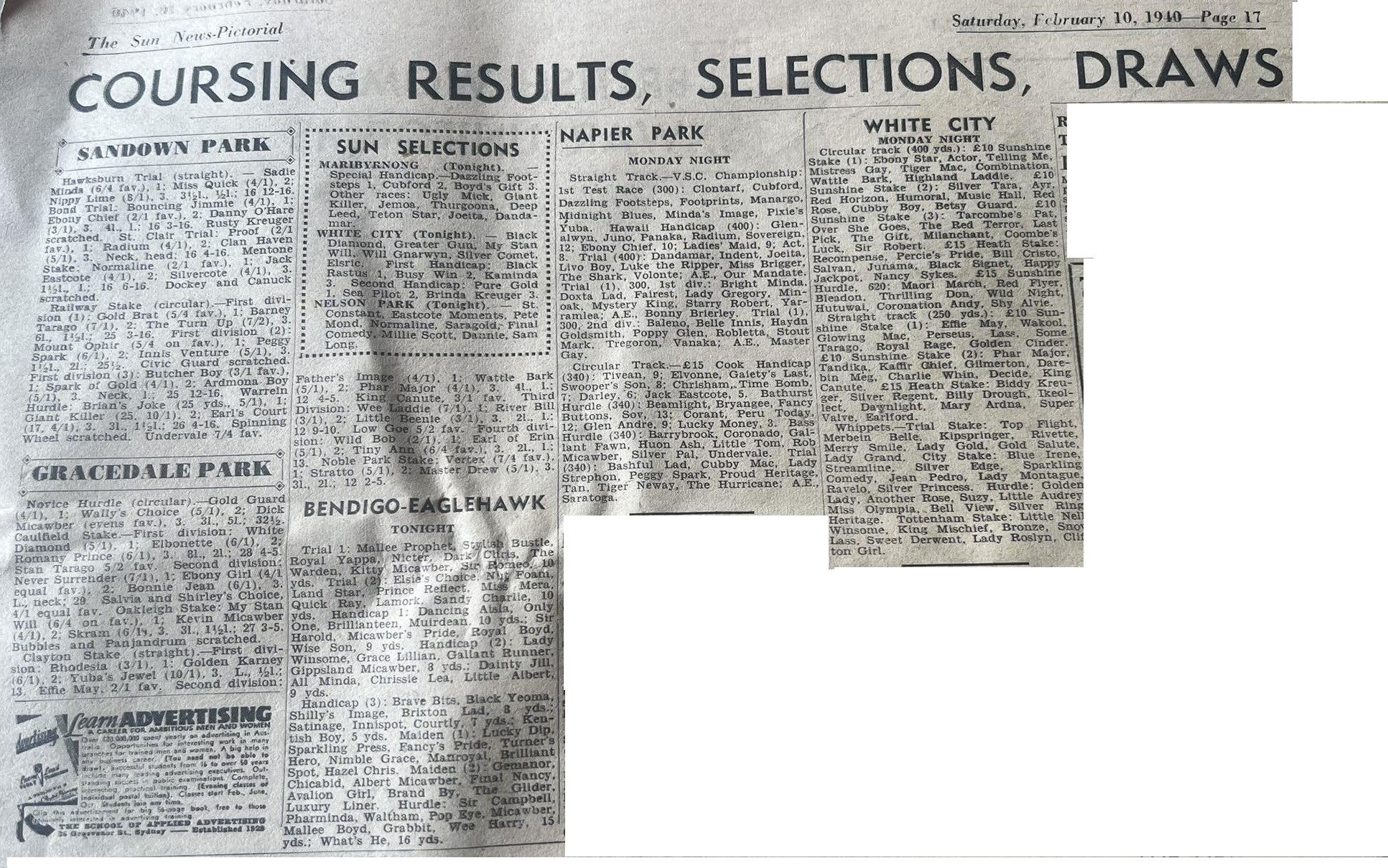
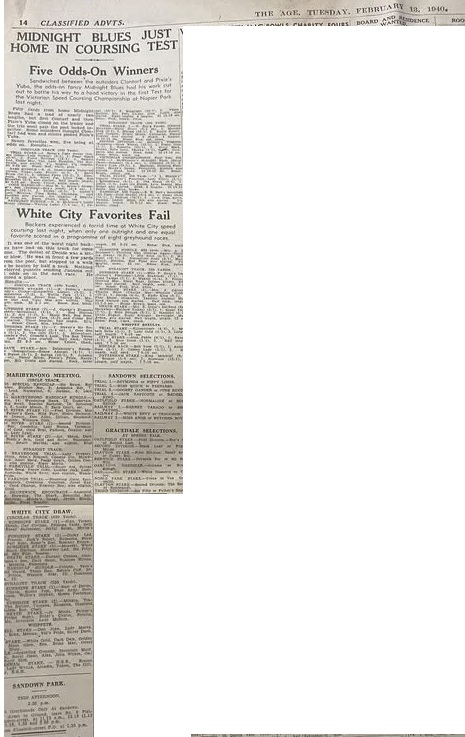
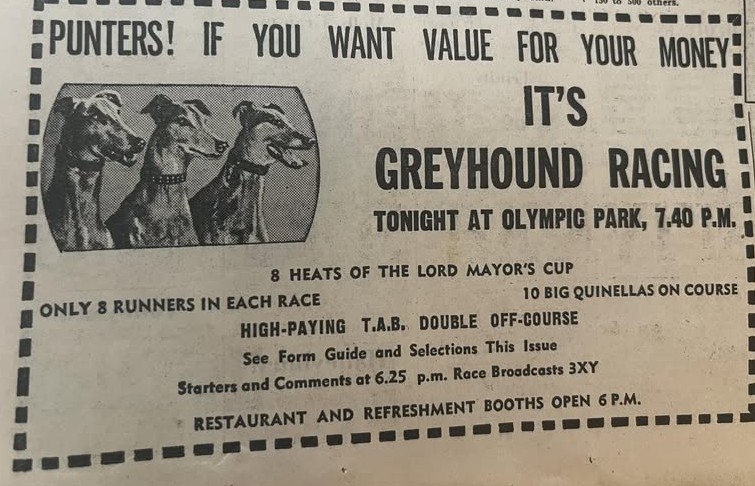
Gerard Lanigan-Some great memories triggered reading this
Half His Luck - Ted Redpath
Plain Winnie. - Bob Smith
The Corcoran - Rod Deakin
Titus - Harry Nugent
Red Wax - Harry Nugent
Brian Kutner- Wow!
My Father owned Lemme Go Patchy race 6 # 8
he went on to win the Victoria sprint championship
mum still has rug and photo on her wall
Trained by legendary SW (Peter) Mcguinness
Lizene Fame.
Fantastic memories!
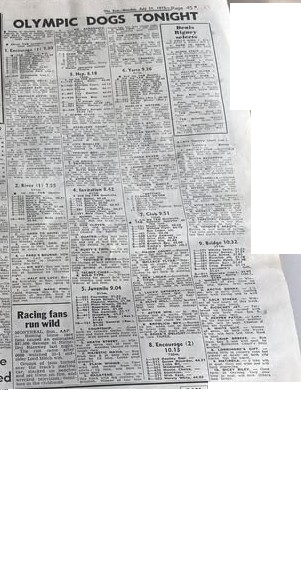

Always love to find new promotions many of which were put together by my club Sandown. A few of the younger folk were amazed when I was explaining how I loved the days of the Marathons. Here is an early one in 1980, run over the 933 metres in under a minute 58.39. The club invited interstaters from NSW and WA. The race was won by Money Ahead trained by the master a very youthful Graeme Bate.
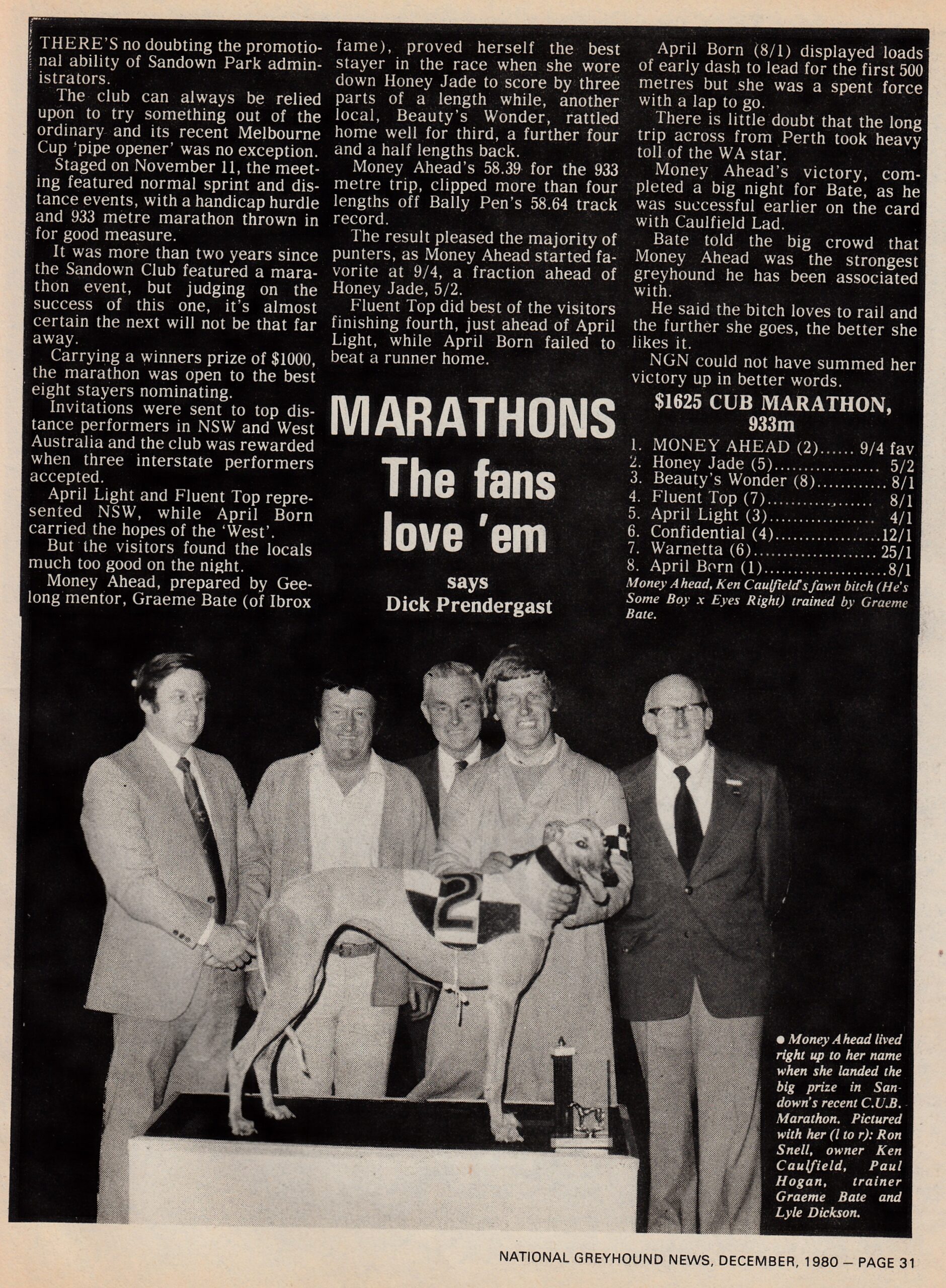
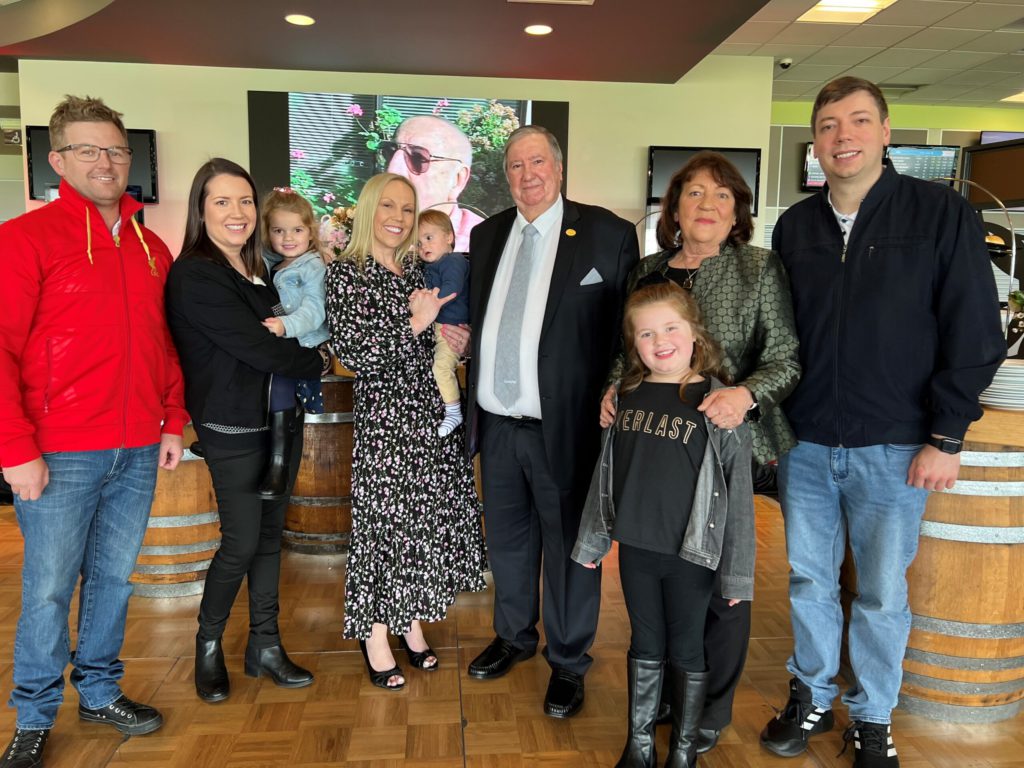
I was shocked and surprised when I got a phone call from Sky Channel producer Jason Pritchard asking if I would do a recorded program on my life in Greyhound Racing. Given the two previous Greyhound subjects had been Paul Ambrosoli and Jan Wheeler both interviewed brilliantly by my long time mate from Sydney Ron Arnold, I certainly didn't put myself in that company. However I agreed as the interview was to be done by former Sandown employee Jason Adams currently a media star whom I had seen develop from a young work experience kid to the man he is today. Here's the show.
https://www.youtube.com/watch?v=3EWefy4VfZY&t=172s
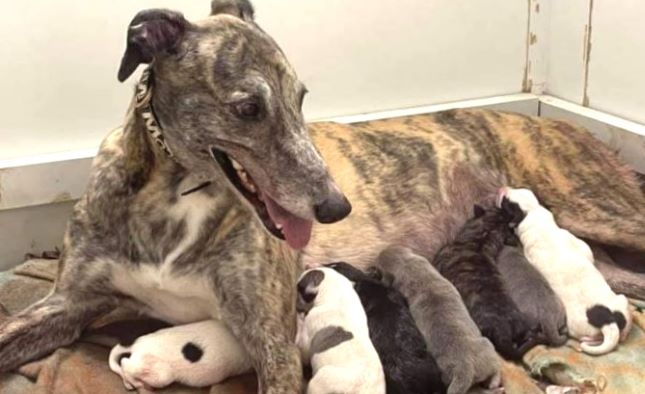
We all have come to know the importance of the dam in Greyhound Breeding here is a fascinating article written back in the 1930's by breeding expert Jack Fitzpatrick.
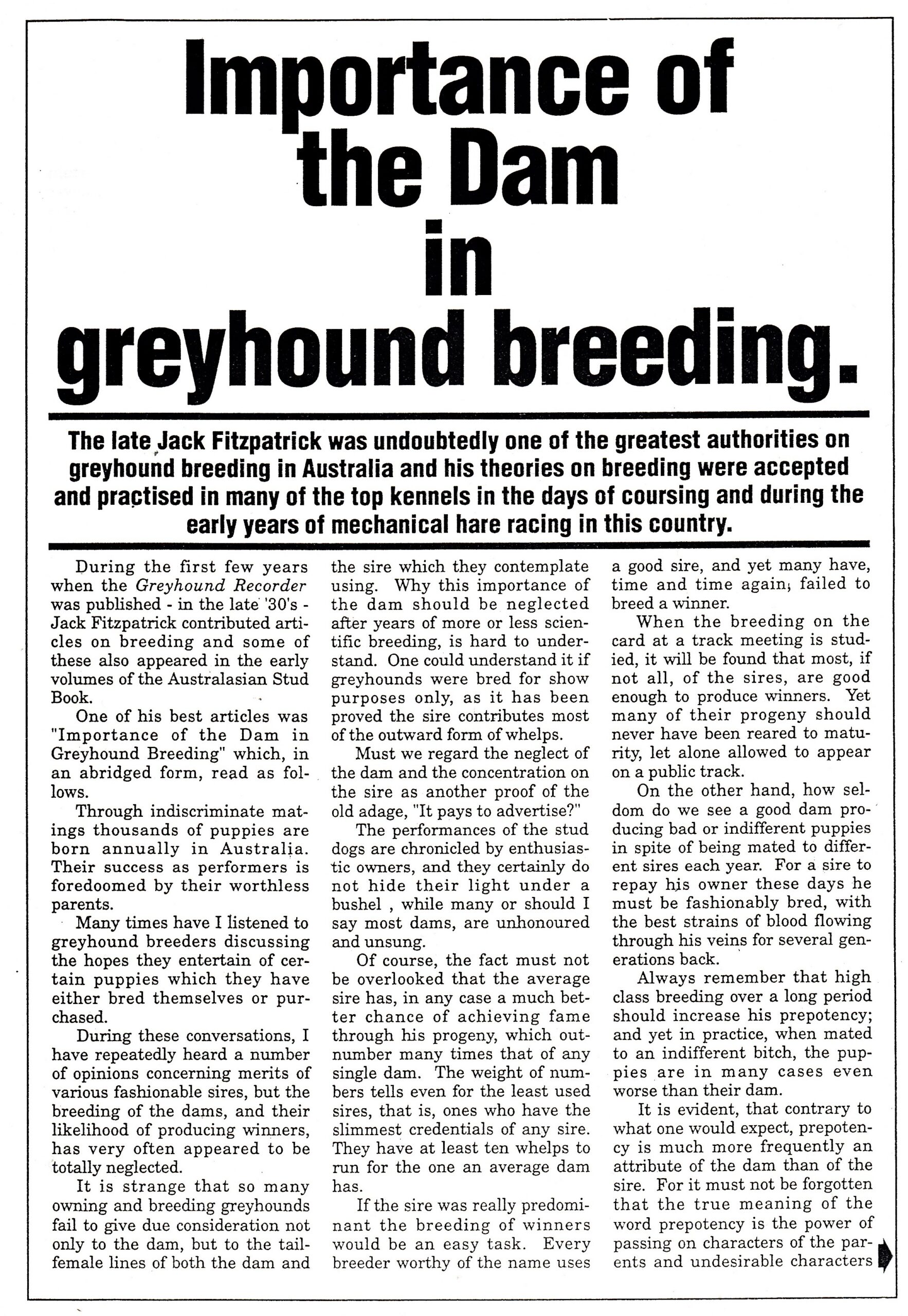
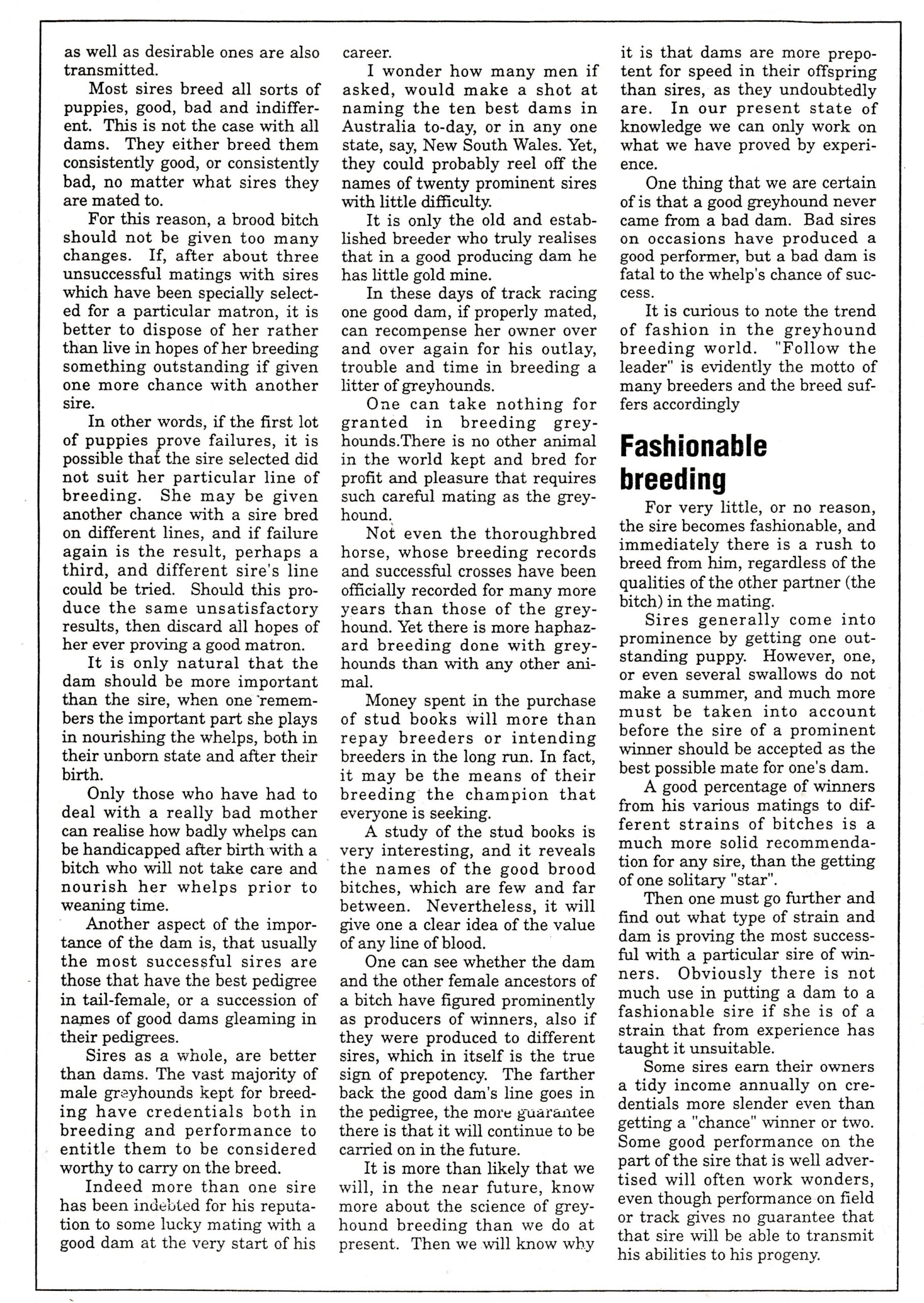
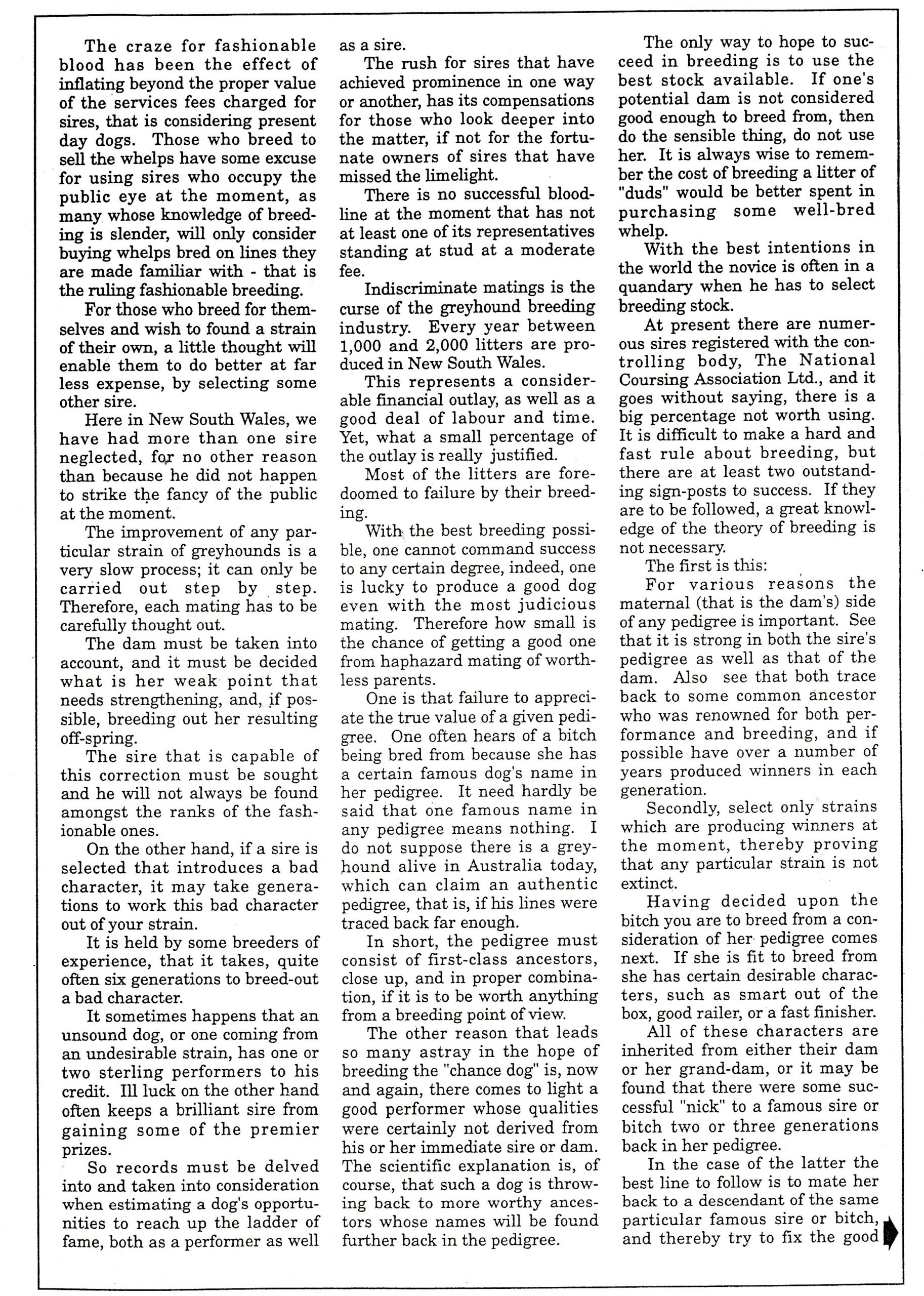

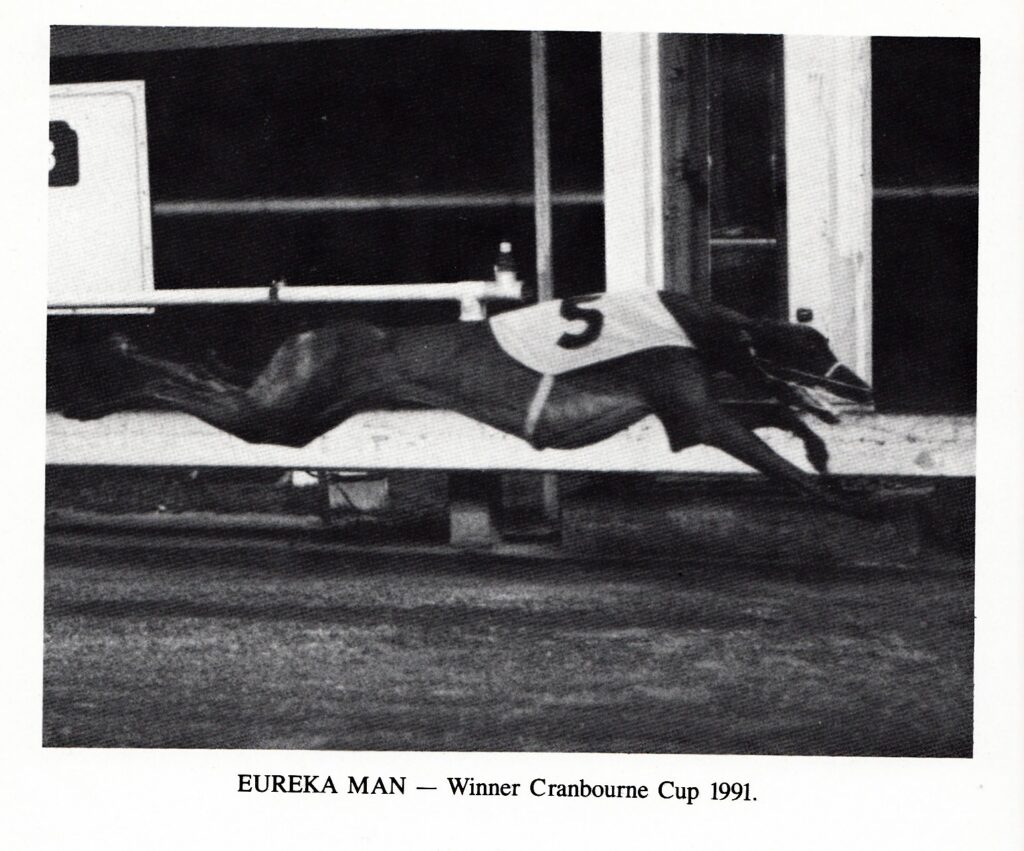
One of the Great chasers of the late 80's into the early 90's was Eureka Man. Raced and trained by Healesville stalwart Ken Pattison. He was judged the 1990 Victorian Greyhound of the Year. The black chaser by Preety Fearless won the award in controversial circumstances due to the rules set maintaining contenders had to have a set number of starts at both city tracks with Superstar Highly Blessed due to injury late in the year unable to fill that part of the criteria. She had an exceptional 1990 winning the Winter Cup at Cranbourne, The Gold Collar at Olympic Park, the State National Sprint final at Sandown finishing third in the National final. She won the Shepparton Cup and the Melbourne Cup. Went to the Gabba on that ridiculous seven left hand turn track without a trial got lost and dead heated with No It's Not in the Four X Trophy heat came back for the final and beat the same dog by 10 lengths. She had rounded the year off winning also every feature she contested. The rule was correctly scrapped in 1991. Perhaps his best win was the 1991 Cranbourne Cup he beat an outstanding field.
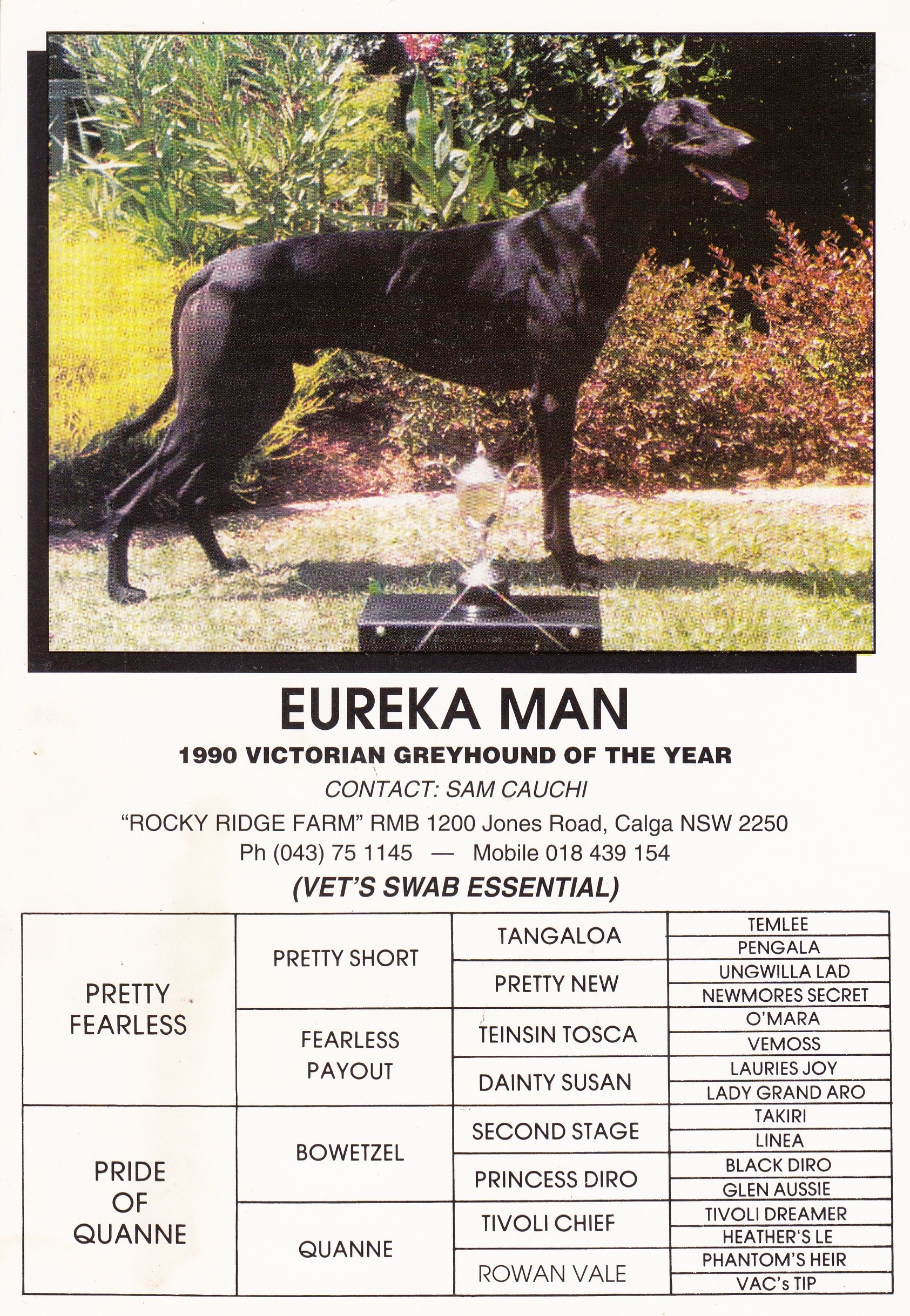
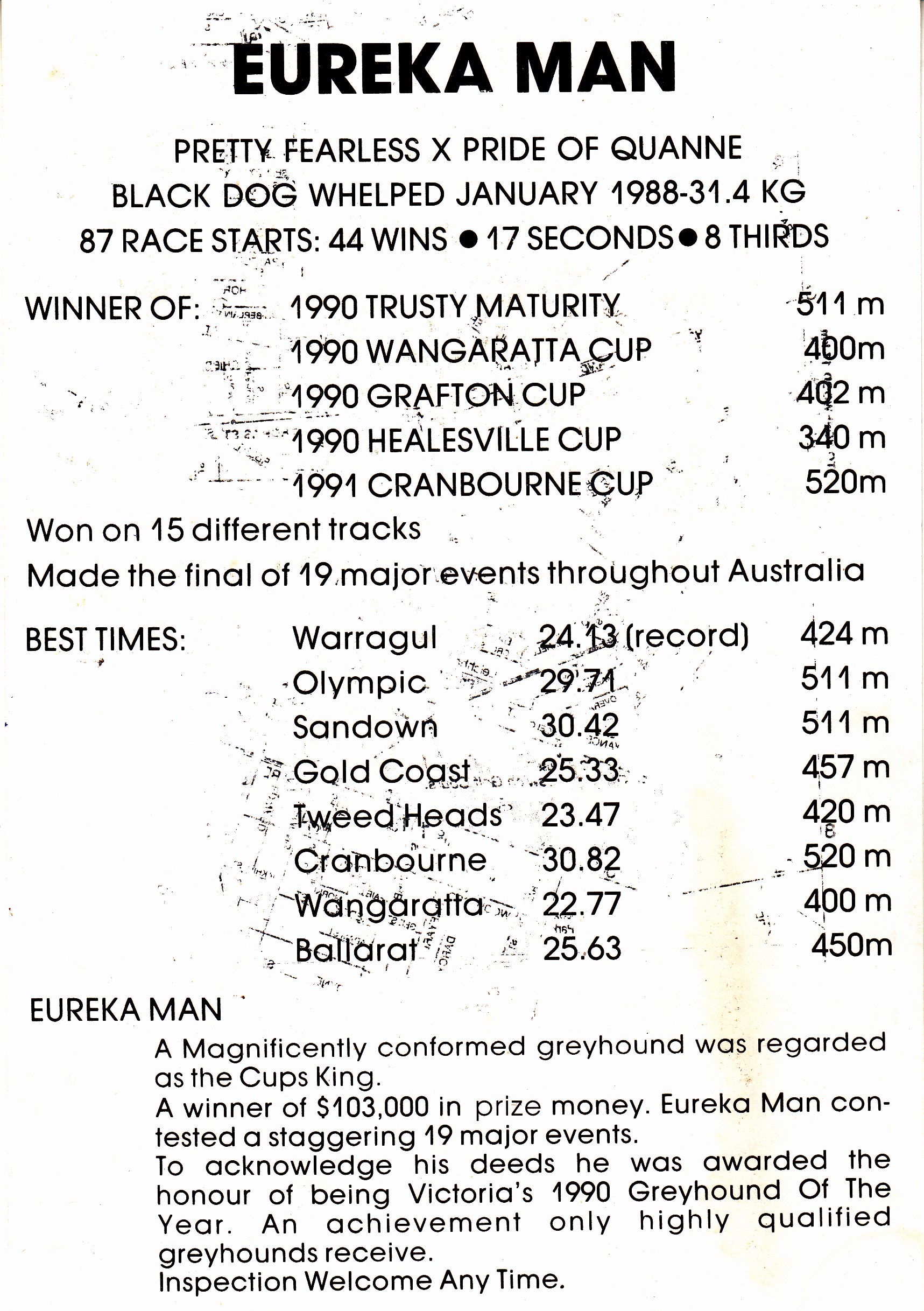
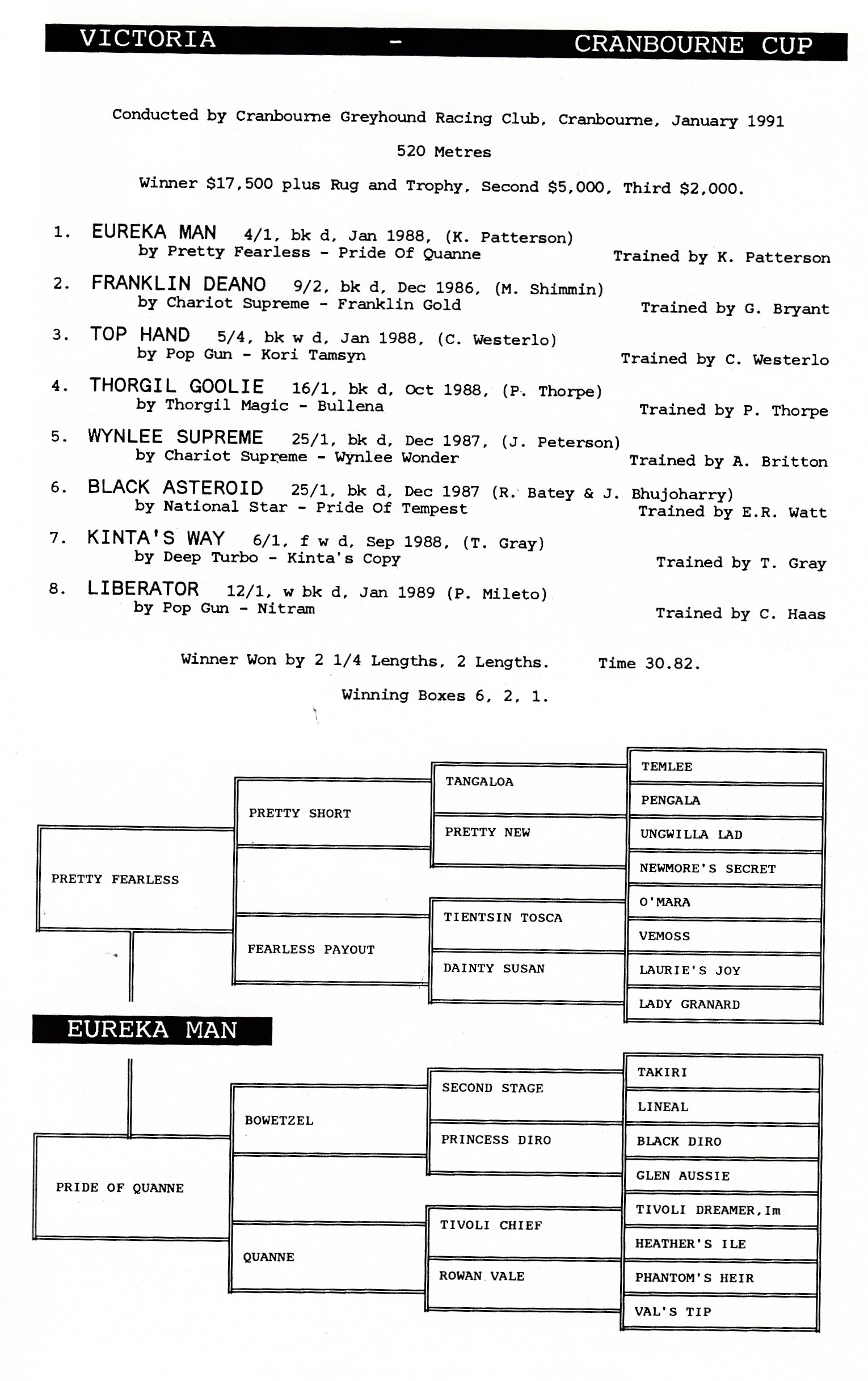
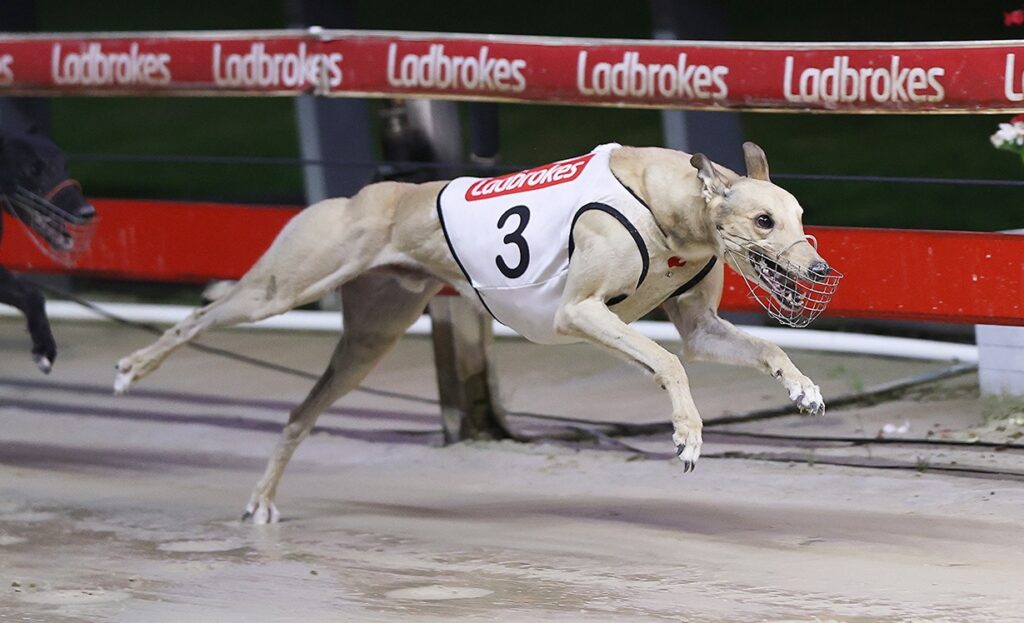
Here are some more pics and stats from Sire Guide 2006.
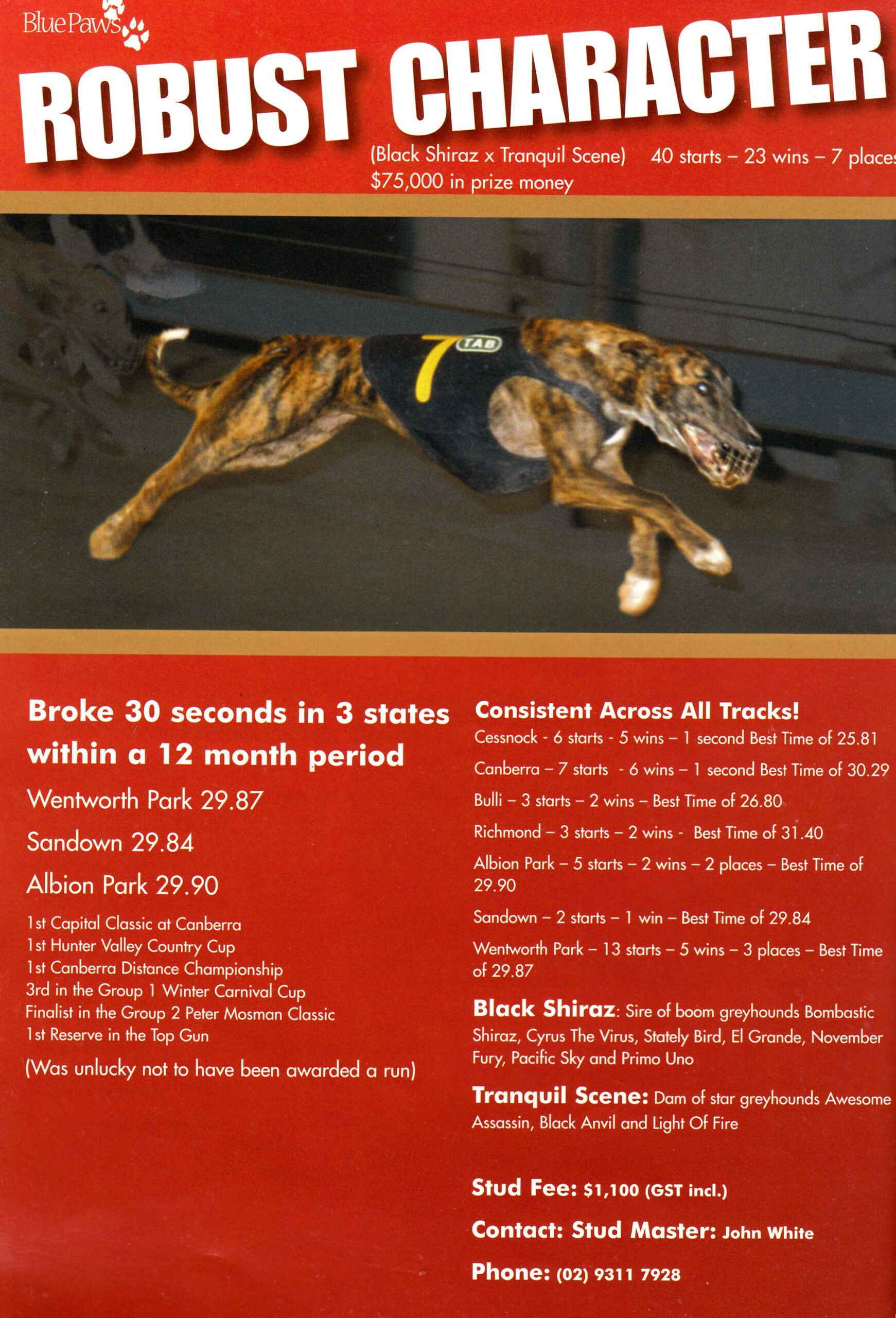
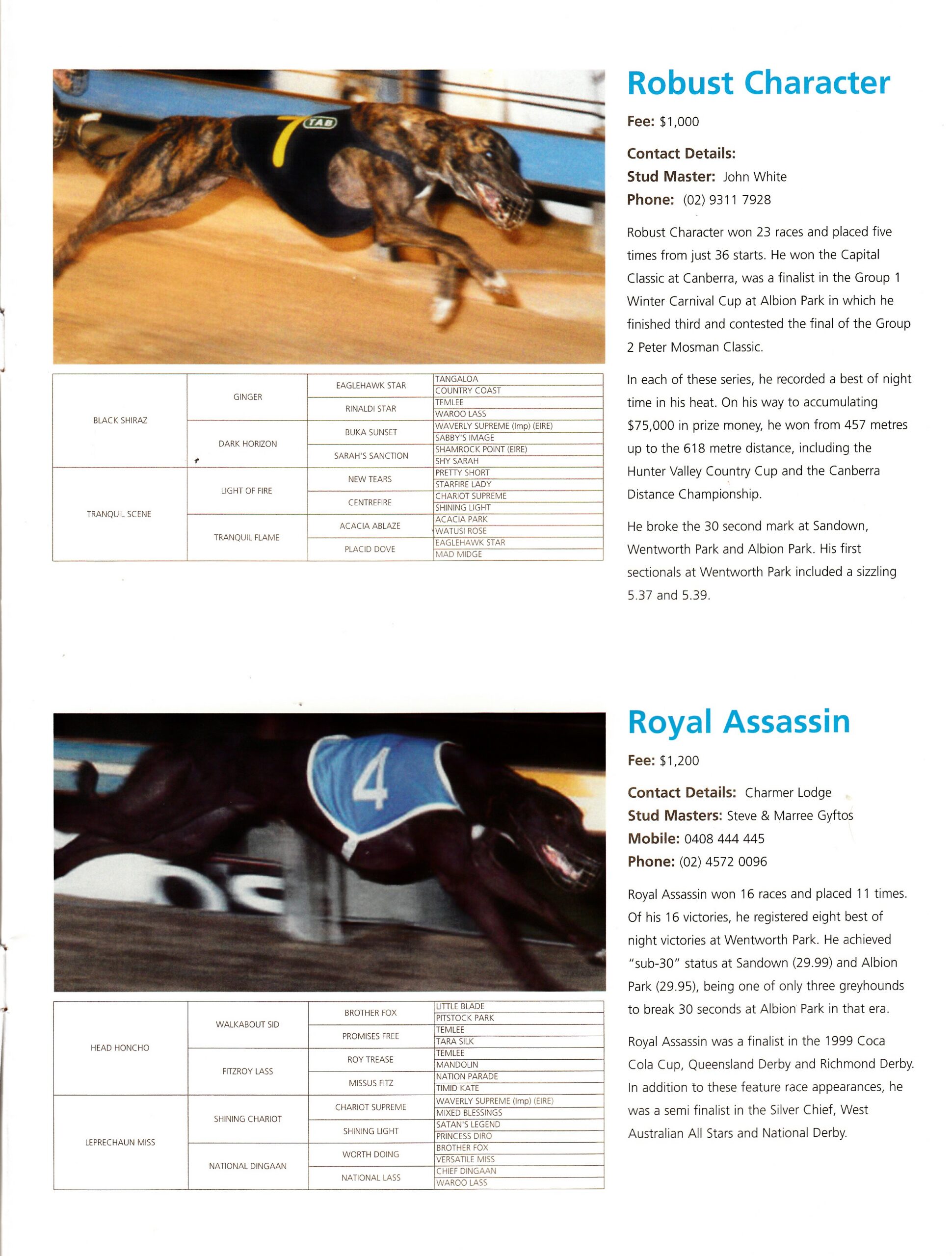
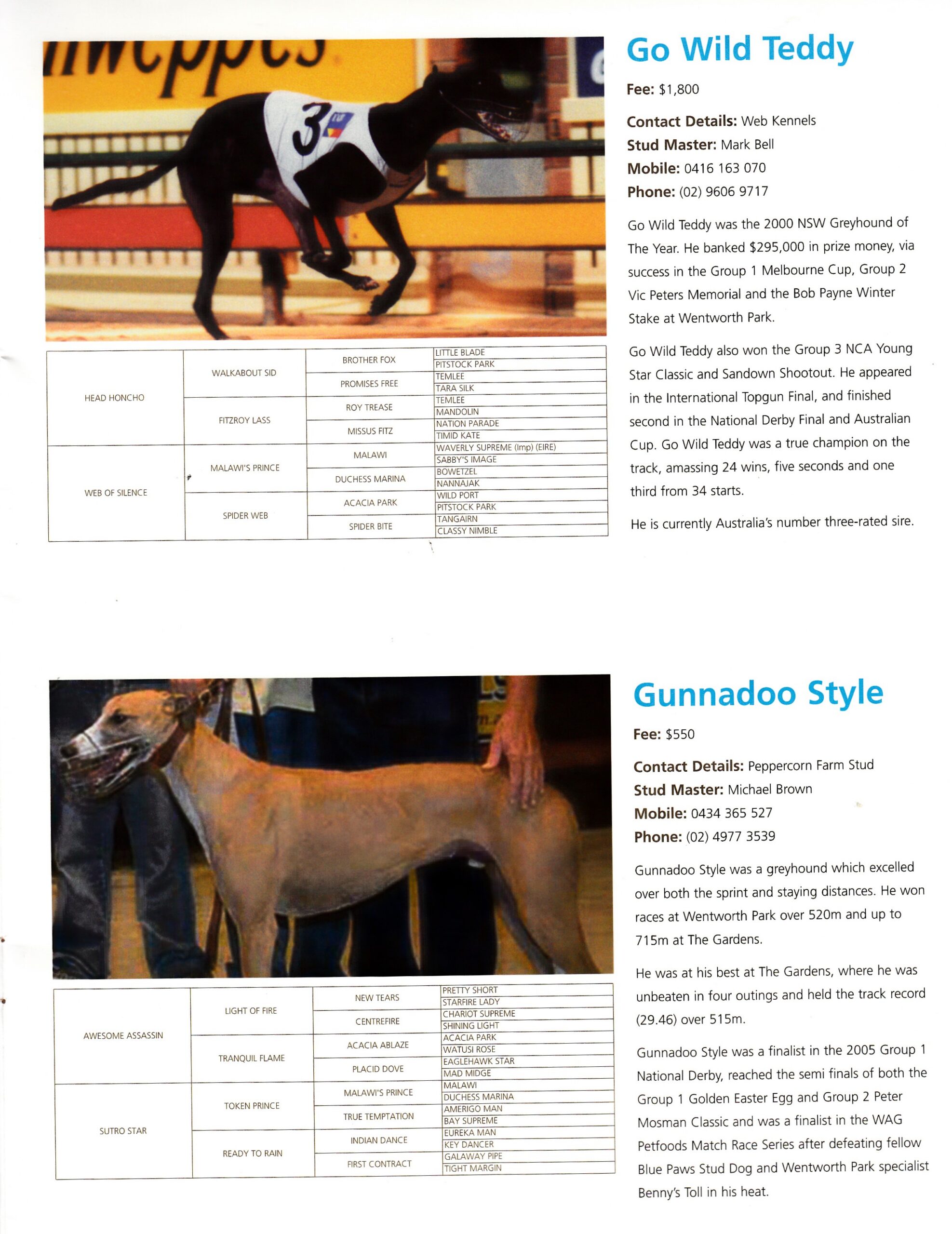
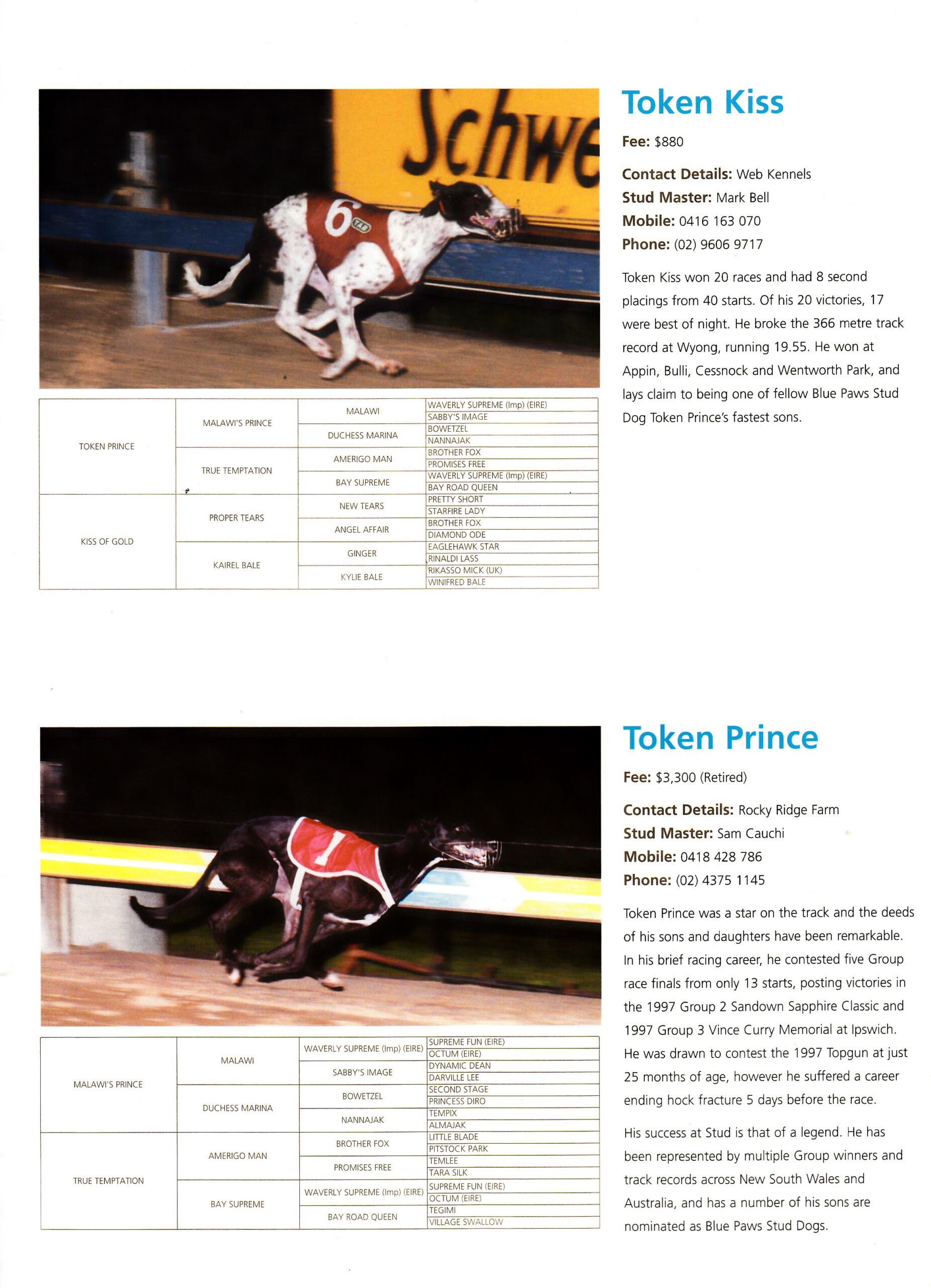
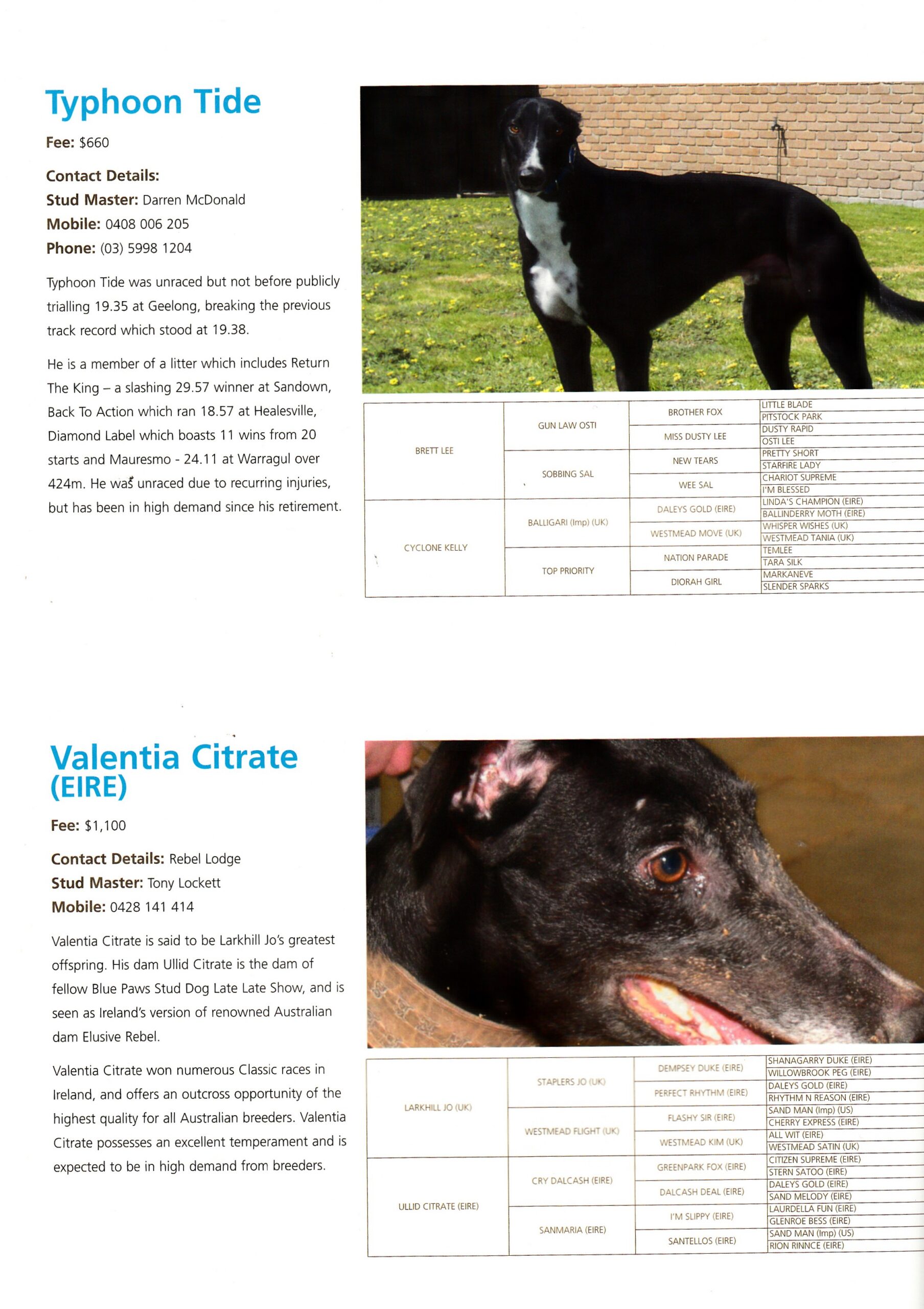


Here are some more pics and stats from Sire Guide 2006.
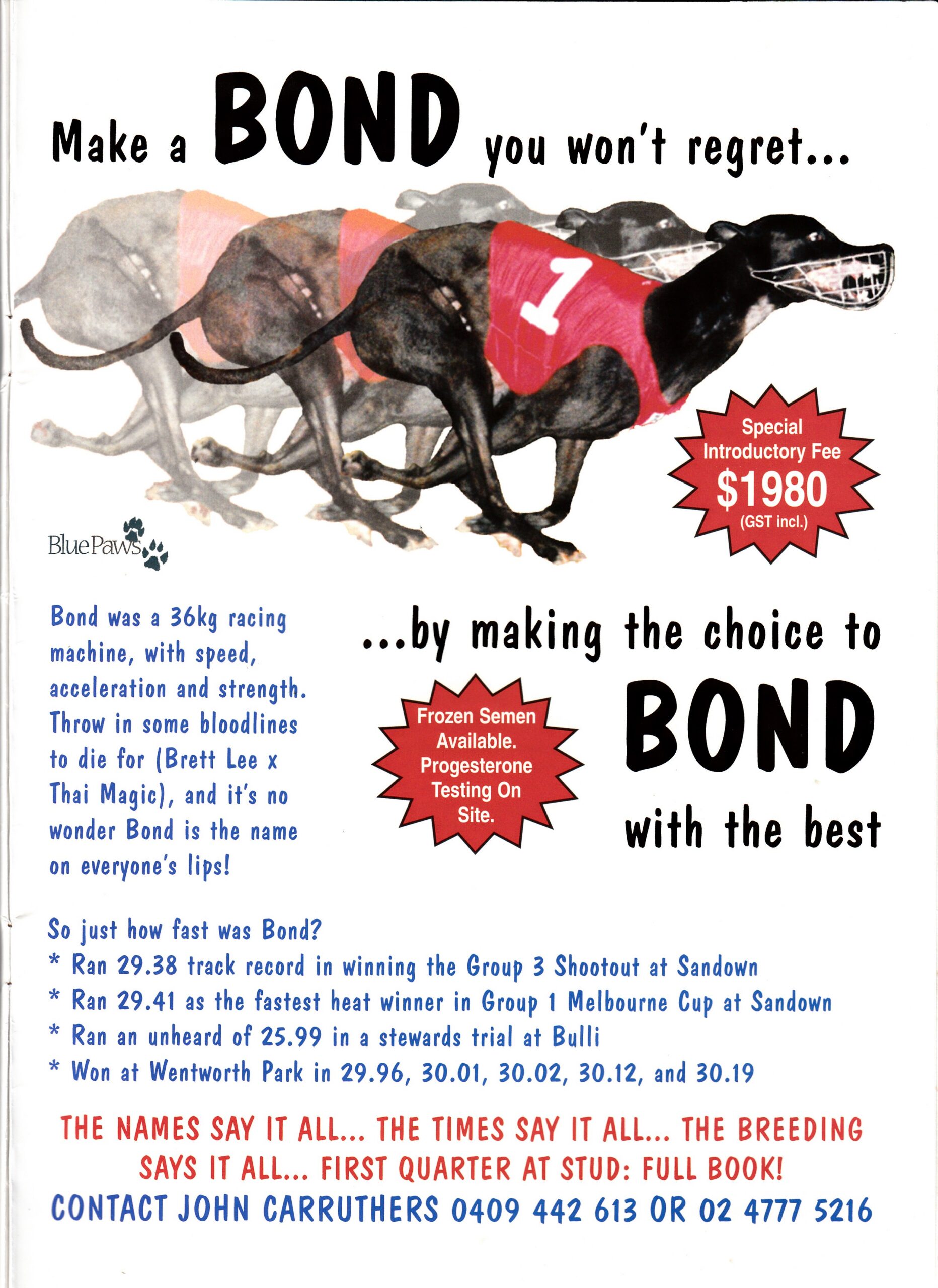
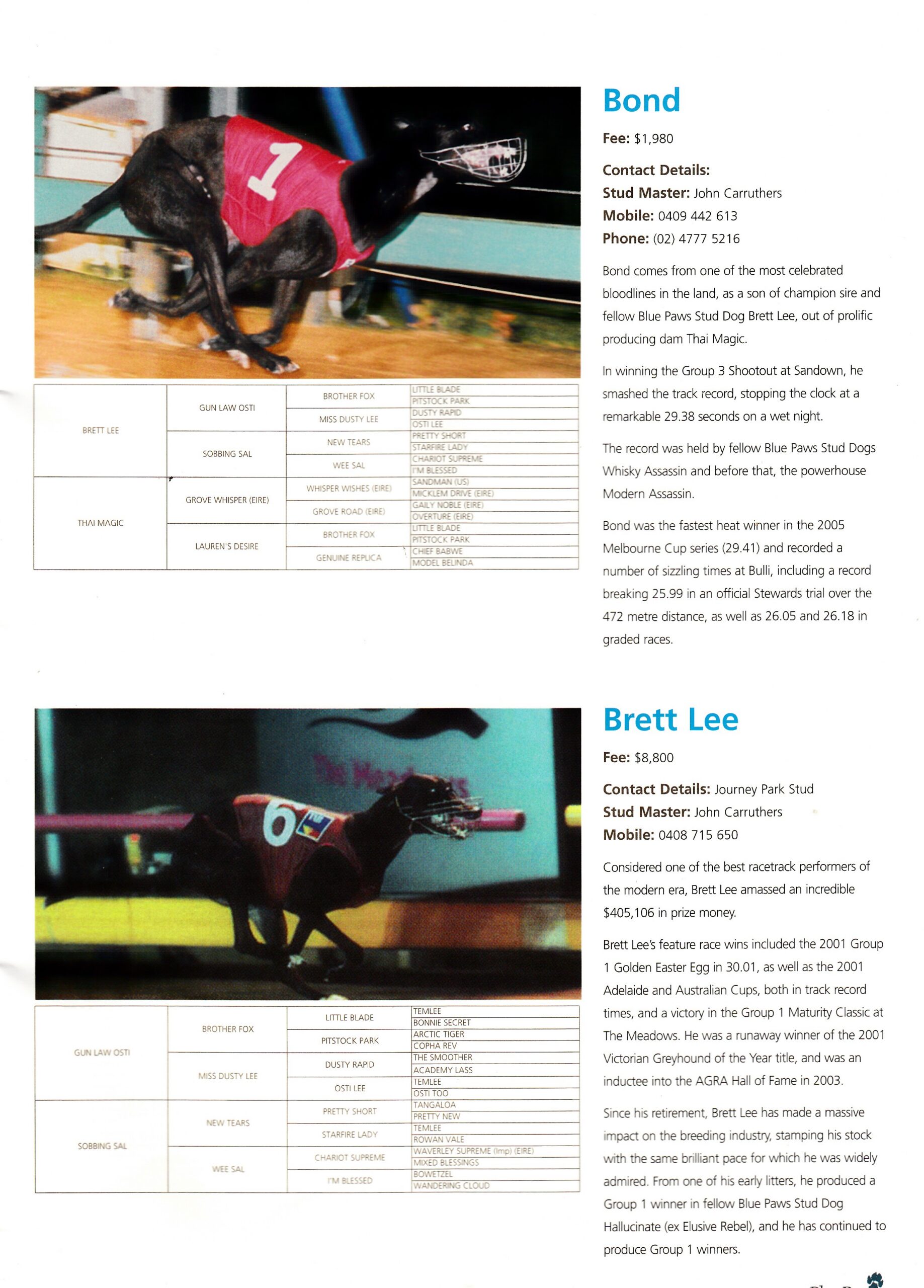
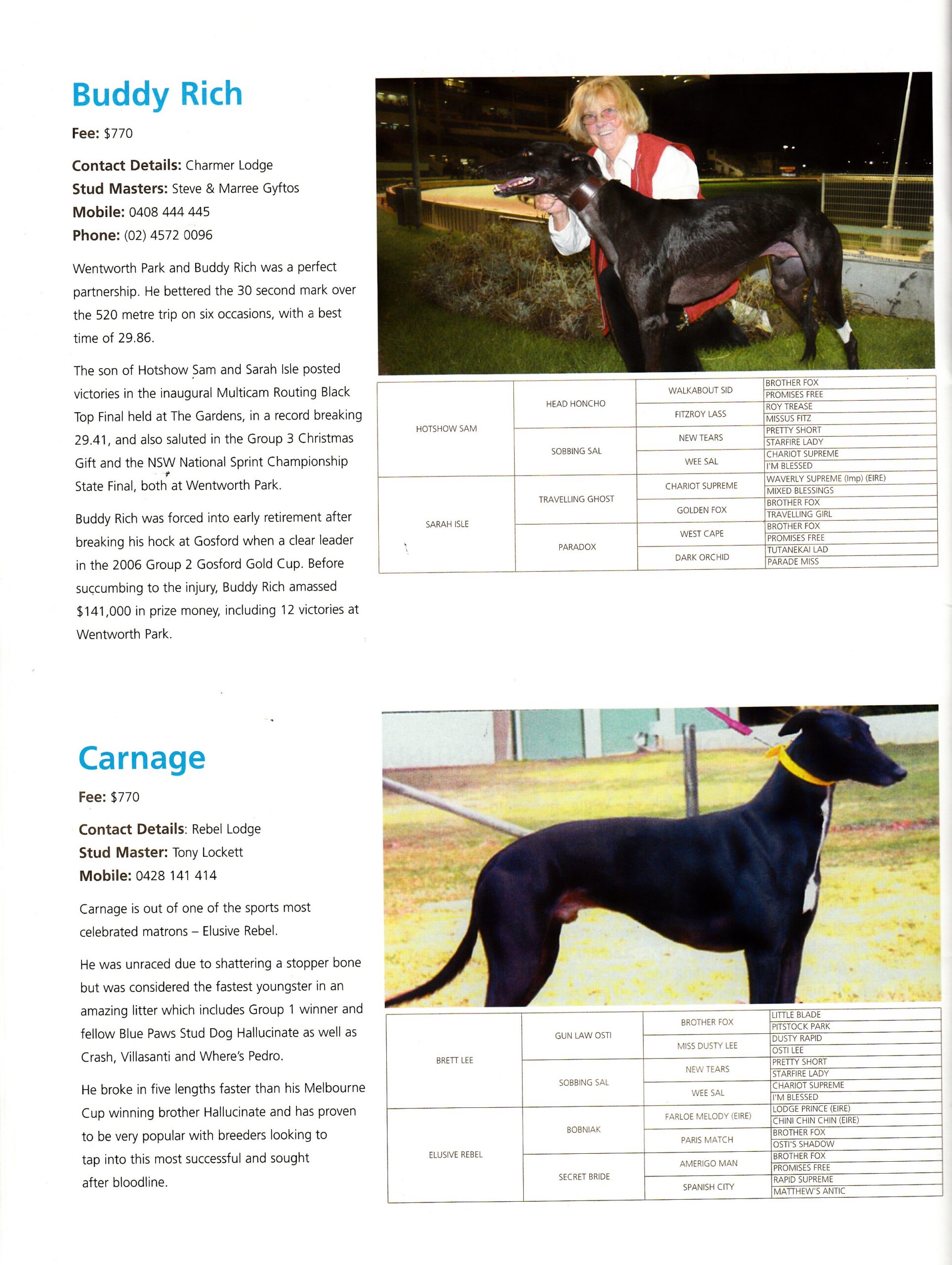
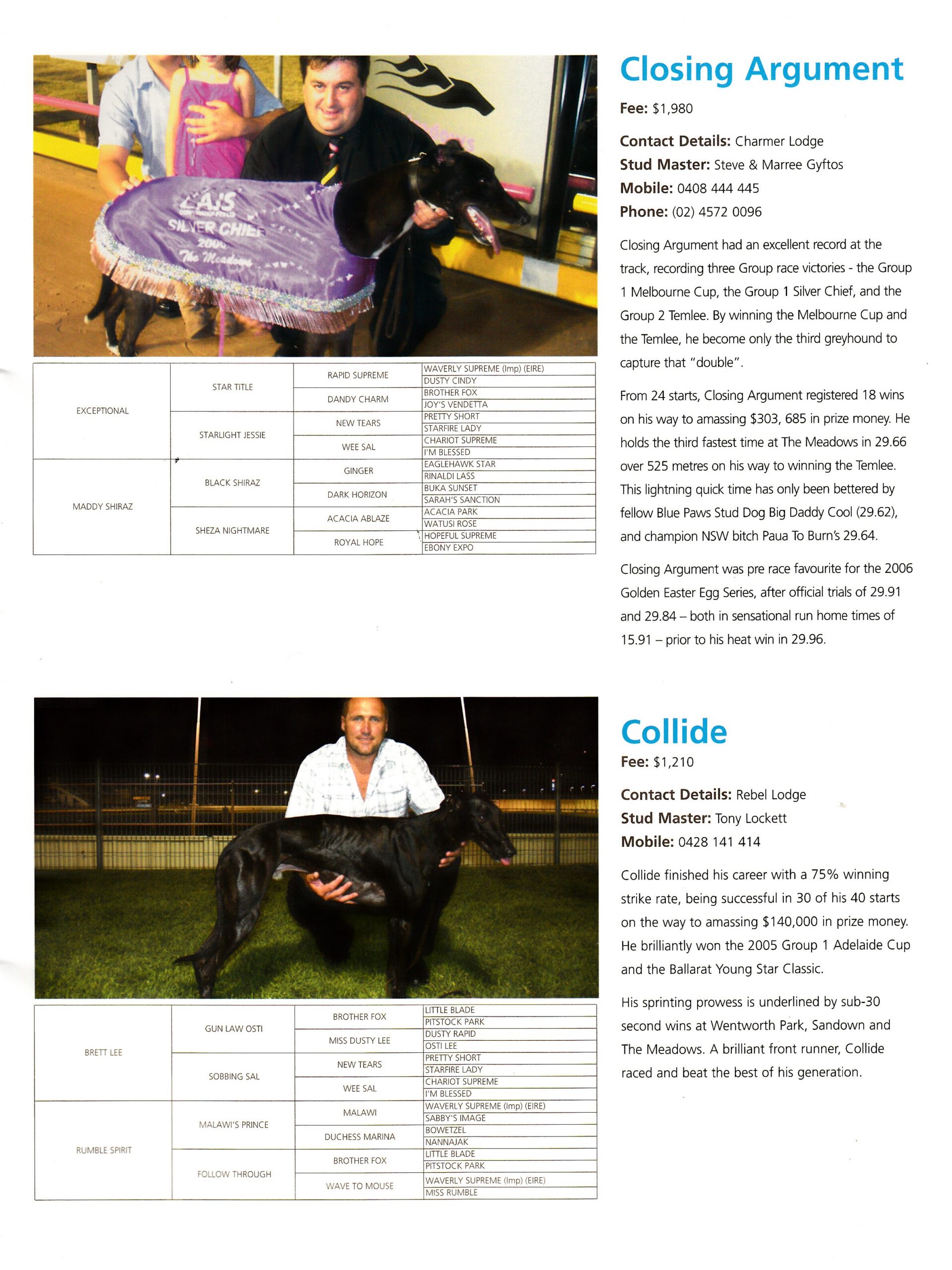
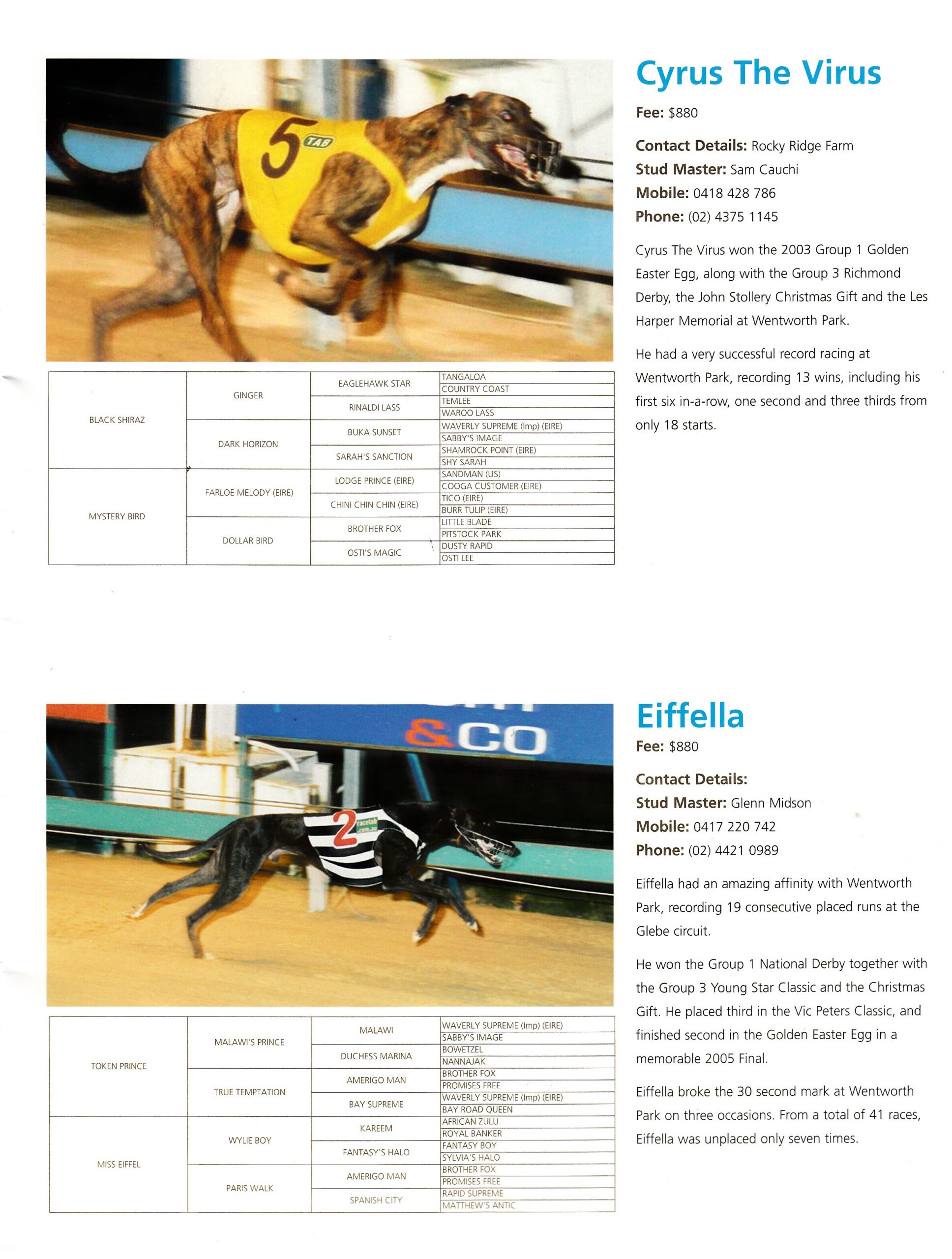
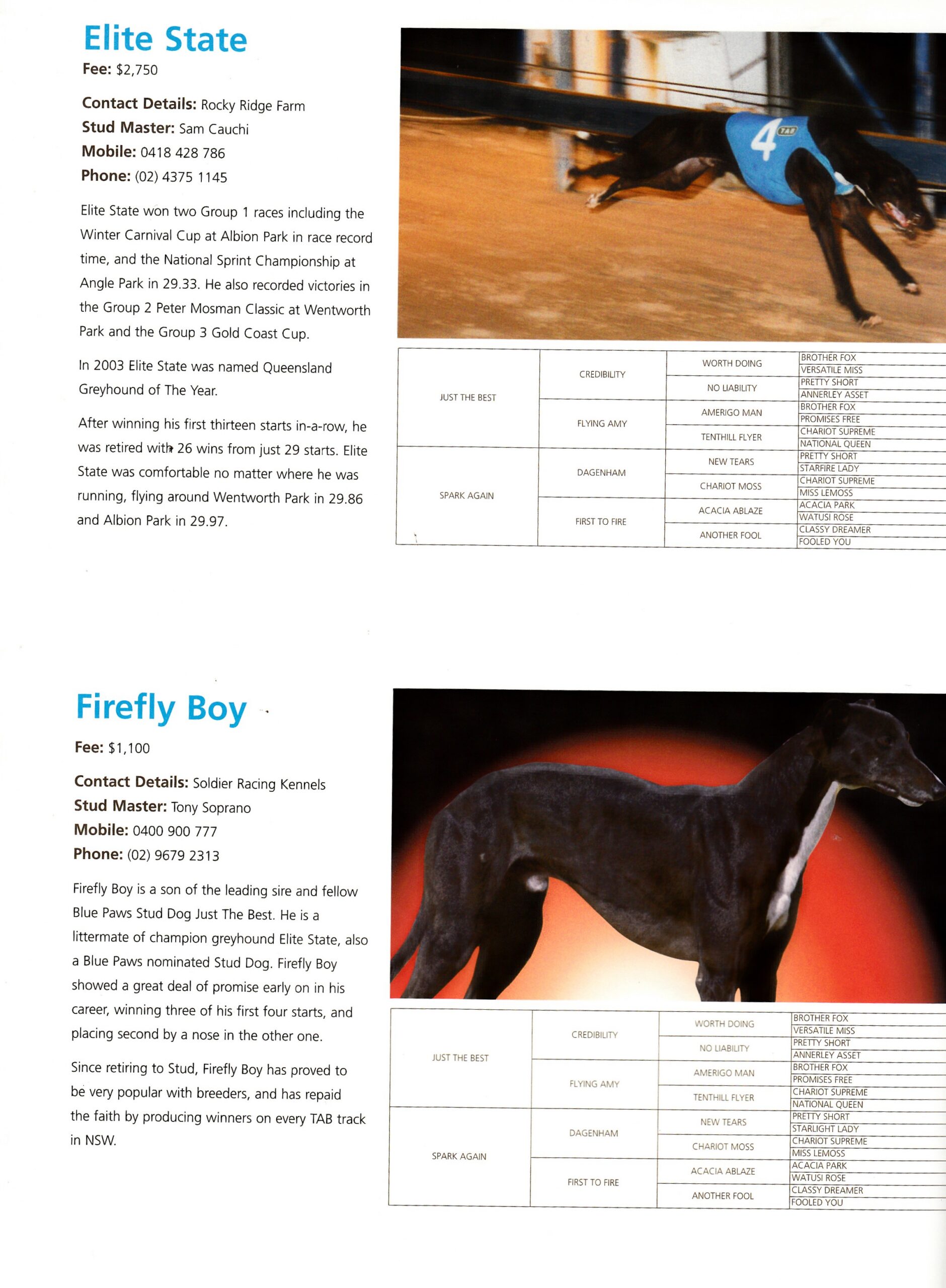

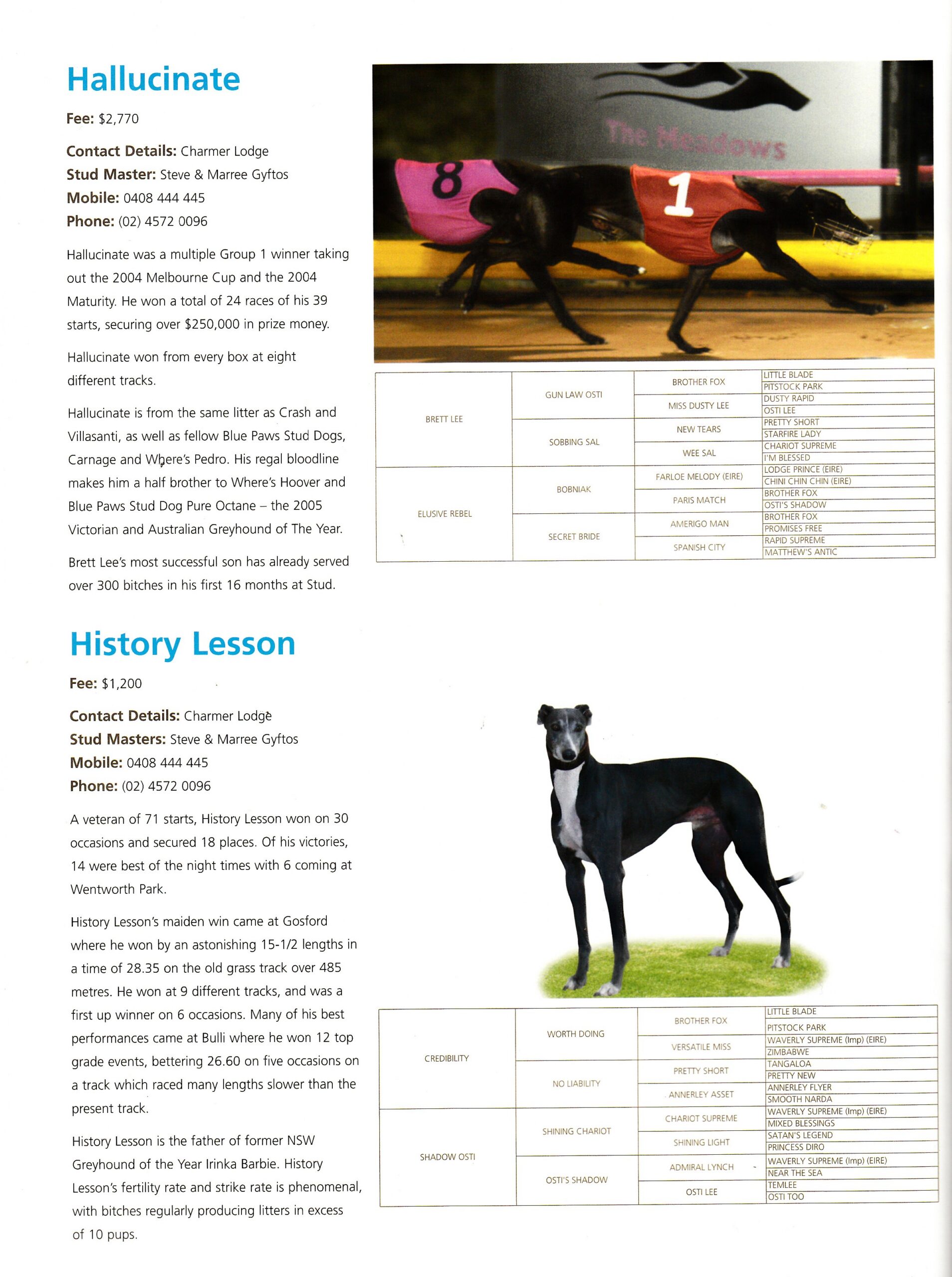
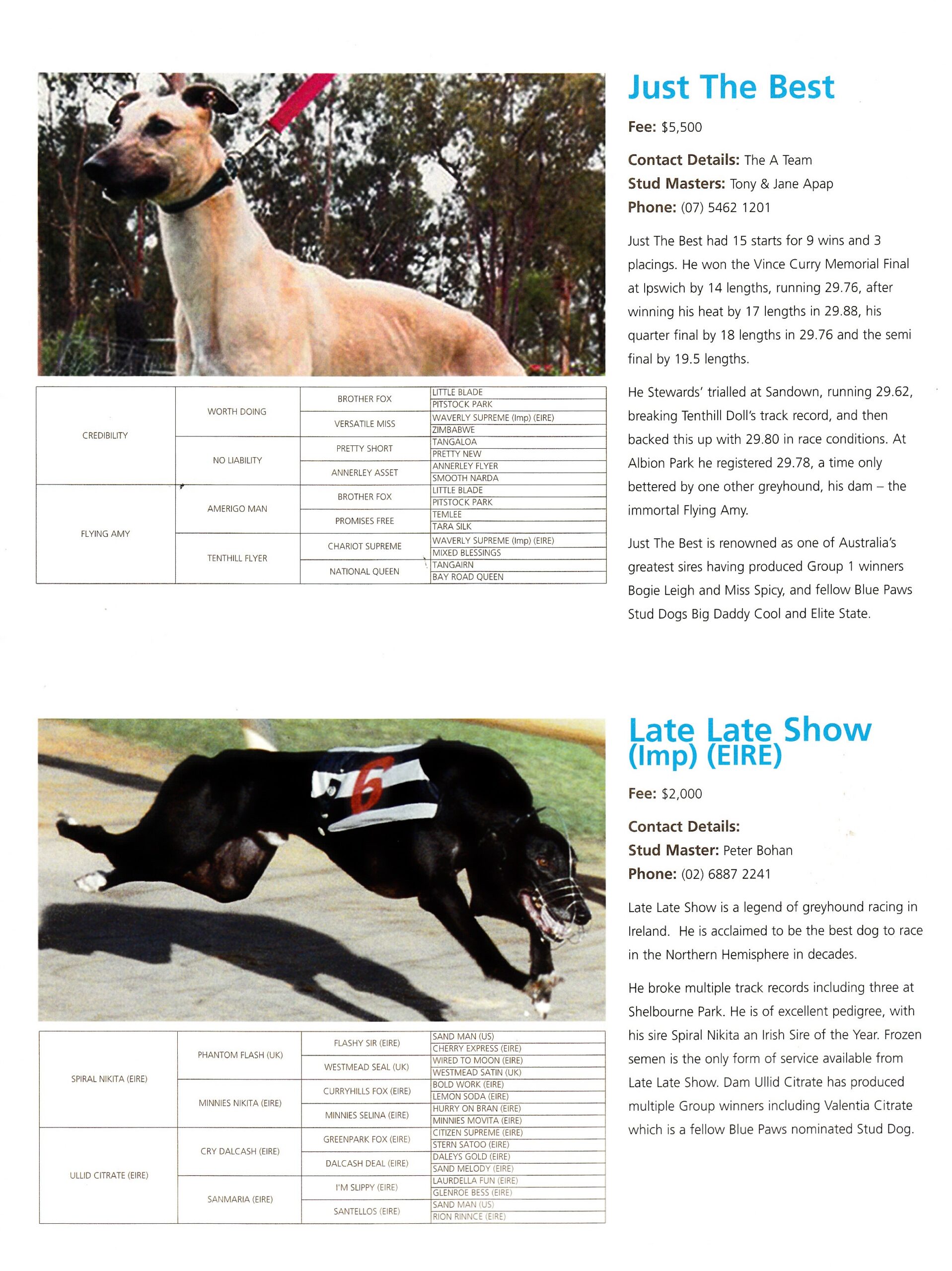
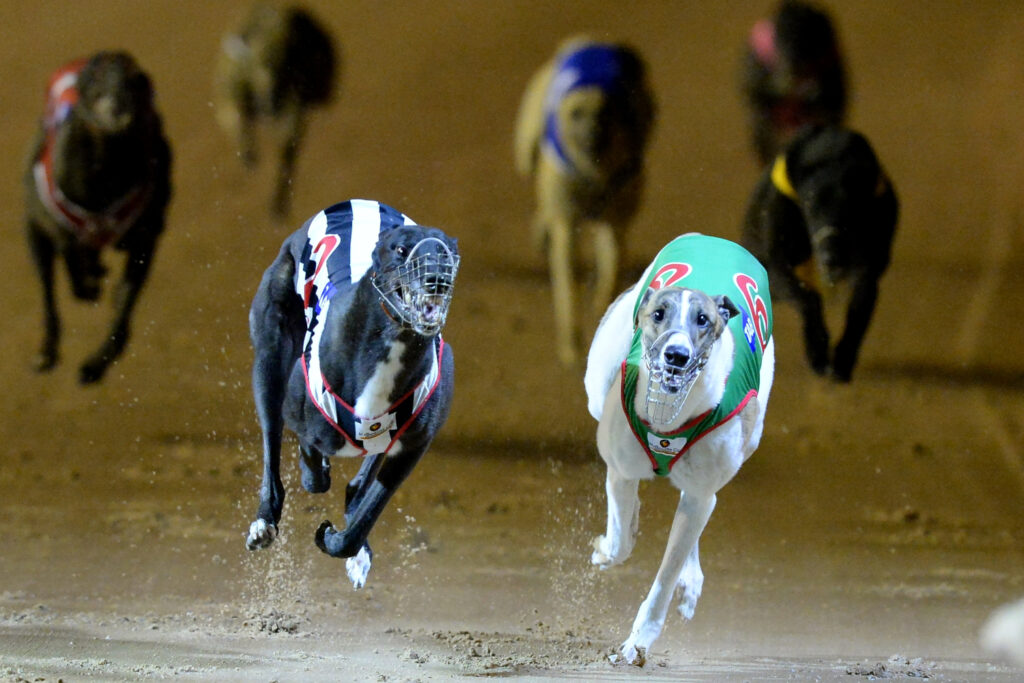
Came across the Sire Guide from 2006 sponsored by Blue Paws. It is beautifully presented with some great race dogs that were standing at that time. Given it has most there stats I have included a number of them from a historical point of view.
